THE GREAT VERDICCHIO
Pievalta vertical tasting
CASTELLI ROMANI
The silent revolution CHEF
Gaetano Trovato

THE GREAT VERDICCHIO
Pievalta vertical tasting
CASTELLI ROMANI
The silent revolution CHEF
Gaetano Trovato
 Vinicio Capossela
Vinicio Capossela

The interview: In Vinicio Veritas
Castelli di Jesi Verdicchio
Classico San Paolo Riserva: a vibrant vertical tasting


The new life of the Castelli Romani: new gourmet destination at the gates of the capital


Chef: Gaetano Trovato. Classic contemporary
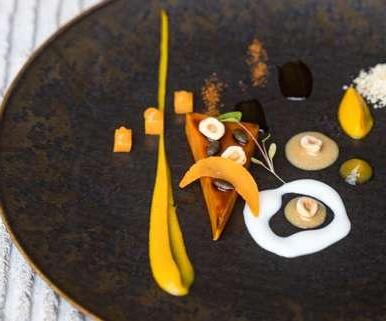
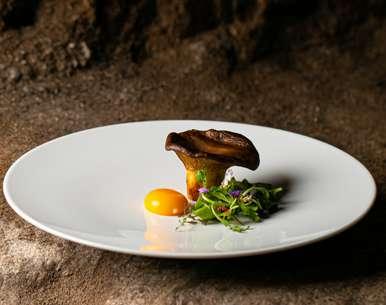

Exactly ten years ago an editorial published by Gambero Rosso openly sided against the “fashion for natural wines’’ which was already raging then. With the signature of Eleonora Guerini, this magazine therefore took a critical position towards a movement which, over time and not without effort, influenced the taste for wine lovers (especially the younger ones) and winemakers (even the most conservative ones). From that article arose a sometimes very bitter debate that has continued up to the present day, dividing enthusiasts as only happens in Italy from the Bartali and Coppi controversy onwards.
Ten years later we have tried to sum up, to draw up a balance of that public discussion on wine, in the hope of understanding how much of all that talk was left on the table. You will read the result in the article penned by Lorenzo Ruggeri and in his amazing interview with Vinicio Capossela , notoriously a lover of the socalled naturals yet critical of the “movement” (small spoiler: “I saw the best minds of my generation get lost in the nectar of natural wines while the extreme right was taking over the electorate and the country”).
The decision to dedicate the cover to a theme that is still to this day delicate and divisive tells in the best possible way what the attitude of Gambero Rosso is and what it will be towards current affairs, news and culture (what else are wine and food if not material culture?). A direct and frank approach to the major current affairs, to novelties and news. Even the most uncomfortable and divisive ones. The same approach that in 1986 Stefano Bonilli chose to characterise his creature . A magazine - with its ruthless rankings and sincere reviews - designed as a tool that could help readers understand the market, the products, the evolution of taste and sensibilities. But also simply - as he liked to say - “help readers not to be fooled”.
– Marco Mensurati
concedosettimapartire dall’inbar il luogo intervistati afferma soprattutdell’aperitivo?
vivono nelle parte donprima di Cristo di erbe e dopo la metà aromatizzato, ripornome, Vermut,
According to a study conducted by Cga by Nielseniq, 2/3 of Italian consumers treat themselves to aperitivo at least once a month and often even two or three times a week. Italy is the country that gave birth to the ritual of the “modern” aperitif, starting with the invention of Vermouth in Turin, the home of historic cafés. And the bar is the place chosen by 4 out of 5 Italians to consume the evening imbibing ritual: 47% of those interviewed say they prefer drinks made with bitters, vermouth or liqueur bases; 24% of preferences went to wine and above all to bubbles. Who are the aficionados of the aperitivo ritual? The picture painted by the survey gives us a portrait of people living in urban areas with an income generally higher than the average: mostly women between 35 and 54 years old. But where does the concept of aperitivo come from? If already in the fifth century BC the Greek physician Hippocrates created a bitter wine made with an infusion of herbs and absinthe and which was to be used in cases of inappetence, it is then in Turin after the mid-1700s that Antonio Benedetto Carpano made aromatised wine famous, bringing the use of absinthe back into the limelight in a more modern form. The Italian name, Vermut, comes in fact from the German wermut, or absinthe.
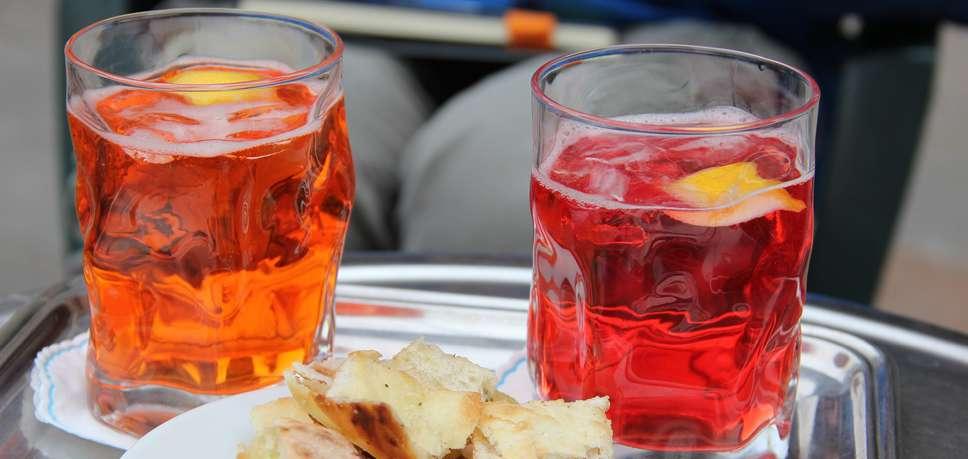
Are organic and sustainable two adjectives that are not equivalent? Maybe in the past. The first step towards the convergence of the two methods is the agreement recently signed in Rome between Equalitas (the company that holds the homonymous sustainability standard) and Aiab (the association of organic producers). A real milestone, given that up to now these two realities have travelled as parallel lines, albeit along the same path. The partnership has also obtained a first “institutional recognition”, given that it was signed in the presence of the undersecretary for agriculture, food sovereignty and forests, Luigi D’Eramo. “Projects like this,” commented the latter “go in the direction of enhancing the sector, promoting both environmental, social and economic sustainability, fostering an ever greater awareness of the characteristics of the supply chain, and communicating its value to consumers.” What the protocol provides is research and development activities - with the involvement of the two respective technical -scientific committees - aimed at comparing organic, conventional and alternative farming models in viticulture on the basis of carbon footprint, water footprint, biodiversity and social indicators. The common objective is to promote a model of sustainable agriculture that is based on transparency and correctness in communication to bring awareness and attention to consumer health, animal welfare, biodiversity, respect for the environment and social justice. On the one hand, the complexity of the concept of sustainability, on the other recognising the strategic value of organic farming in the protection of biodiversity and the health of all stakeholders in the supply chain.
that’s



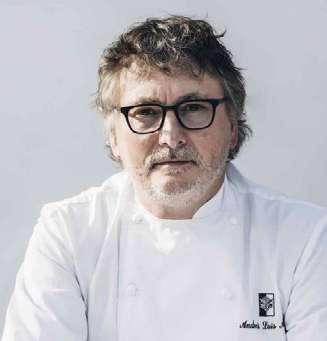
The Shedir group, a company specialised in luxury hotels, has acquired Palazzo Vilòn housed inside Palazzo Borghese and made it the most exclusive private residence in the entire city: available for memorable stays, events and dinners. Starting from 25,000 euros a night. As a matter of fact, Rome lacked a super-luxury offer at this level. Voilà served the millionaires. In ancient times it was the home of one of the most influential dynasties of the European seventeenth century, now available to a few lucky guests (12 at most) determined to treat themselves to a stay in the heart of history among frescoes, marbles, fine stuccos and original furnishings: 1500 square metres, the property comes with a butler and breakfast included in the 25,000 euro daily rate. An elite residence suitable for Hollywood stars, ambassadors, heads of state and Arab princes. And, of course, anyone with that kind of wallet.
photo by Mattia AquilaThe “Iconic Chef of 2023 for The World’s 50 Best Restaurant is Spanish Andoni Luis Aduriz of Mugaritz in San Sebastián. He is recognised as the personality who with his work has brought positive change to the sector and society, for the “outstanding contribution to the world of food, worthy of international recognition, and who has used his platform to raise awareness and drive positive change in the sector.” With his Mugaritz, the chef has marked the history of world gastronomy over the last 25 years, and not only through the elaboration of innovative techniques and dishes - some unforgettable - but also and above all with the questions he has incessantly asked himself and his clients. An example of this is the pioneering work on mildews and fermentations, in search of new textures and flavours, but also to investigate the point at which the life of a food fades in its end, the boundary between what is good and what is not, between the already known and the obscure, allowing space for disturbing elements, capable of making guests uncomfortable. Aduriz is among the most influential chefs of his generation, capable of looking at the evolution of cuisine as well as that of people, society and environmental safeguarding, the promotion of sustainable agriculture and in the reduction of food waste.
– Antonella De Santis
Malfa (ME)

7000 bottles
average retail price: 17 euros
100% malvasia delle lipari
After a long period of crisis due to a steep decline in the sale of sweet wines, Salina is now the Sicilian island with largest area under vines. Caravaglio was the first to reinvent itself by proposing, alongside their time-honored Malvasia delle Lipari passito, dry wines based on this age-old grape. As a true vintner and a skilled entrepreneur, Nino now produces three types of dry Malvasias, in addition to the classic passito, all wines of the highest quality. Once again Nino Caravaglio, who’s clearly on a roll, earns our Tre Bicchieri award in Vini d’Itaila 2023 guide. His Infatata ‘21, a dry malvasia, proves extremely varietal in its aromas, offering up fruity and floral whiffs that combine with clear iodine notes; a fresh salinity on the palate is a clear mark of the territory. Try to pair it with a simple and savory spaghetti with anchovies: you’re going to dream with open eyes. Lastly, if you pay a visit to Nino in Salina, don’t forget to buy his world class capers.
3,


2,5
1,5
2,5 cl Blood orange juice
0,5 cl Honey
«Asophisticated drink inspired by Sophia Loren: a pink-toned cocktail, prepared with a splash of tomato liqueur and crowned with fried basil. This drink is a tribute to Sophia’s great Italian roots and also to my Italian heritage here in London. The singularity of the beverage is the characterising taste of tomato, although in reality the tomato is not used as an ingredient. Instead, we work with the exotic Tamarillo plant which, combined with Seatrus Gin, gives the cocktail the same aroma, but with an added touch of acidity and salinity».

BARTENDER : Growing up in the province of Verona, Federico Pavan embarked on his first adventure abroad in 2009, when, not yet twenty years old, he moved to Madrid. The experience at the ME Hotel as head barman allowed him to discover a passion for hospitality, to which he dedicates himself completely. In 2012 he was summoned by Salvatore Calabrese "The Maestro" to join the staff of The Playboy Club as bartender. The experience at the legendary High Five Bar in Tokyo was also fundamental. Here, under the rigorous guidance of the great Japanese master Hidetsugu Ueno, he learned the art of balance and precision. In 2015 he joined the Coburg Bar at The Connaught Hotel as head bartender, then in 2017, when Calabrese embarked on the adventure of the Donovan Bar at Brown's Hotel in London, he called him back to his side.


The village of San Felice, in the Castelnuovo Berardenga area, has a very long history that has its roots in the eighth century AD. In 1978 it was purchased by the Allianz Group, which began big renovation work, with the creation of an avant-garde winery, and later, in 1991, with the impressive restoration work of the structures and the conversion of these into Albergo Diffuso, the only resort in Chianti Classico to enter the international circuit of the Relais & Chateaux luxury hotel industry. But San Felice is not the only winery that has extended its glance around Tuscany over the years, investing in two other territories, first in Montalcino, with the Campogiovanni brand, and then in Bolgheri with Bell’Aja. Since last year, the management of the company has passed into the hands of Carlo De Biasi: «San Felice is a historic company that has distinguished itself for its ability to innovate and for having maintained its identity over time. The great intuitions of the past are still relevant today, from the birth of Vigorello in 1968, to the first single vineyard Chianti Classico in 1978, the current Poggio Rosso Gran Selezione, not to mention the Vitiarium, the most important collection of minor vines that is today reservoir of biodiversity. The main challenge that we will have to face for the near future is to guarantee the constant improvement of the quality and the maintenance of the identity of the wines produced in a context of climate change». If there is one plant
species that can be considered an indicator of climate change, it is the grape vine: «In San Felice we focused on regenerative viticulture, a model based on the carbon cycle, which regenerates the soil, stops erosion, promotes biodiversity and mitigates the effects of climate change, focusing attention on the recovery of the natural fertility of the soil. It is a new frontier because the starting assumption changes: regenerating the soil to have a resilient vineyard.» It is obvious that these topics are also the springboard for talks on sustainability: «When we started talking about sustainability between 2008
and 2010, the concept was not as articulated as it is now. Some more attentive producers discussed how to tackle the issue in the wine supply chain: among these was San Felice.» A path, made up of experimentation, innovation and the adoption of good practices, which today has led the company to obtain the Equalitas certification and to be self-sufficient from an energy standpoint. «Sustainability is not just about protecting the environment – continues De Biasi – but also about creating a better future for everyone. We support the Allianz UMANA MENTE Foundation with social farming projects such as
L’Orto and L’Aia Felice, a vegetable garden where children with disabilities have the opportunity to learn and grow through horticulture. By partnering with older residents, we are creating a community that values tradition and innovation, and that celebrates the power of fresh, seasonal ingredients. Coming to taste our products from farm to table in the restaurants of Borgo San Felice is a truly sustainable, unique and stimulating experience.»

«The environmental challenge must be tackled together», Carlo De Biasi is firmly convinced of this. «We cannot compete between companies on these issues, but we must share strategies and experiences to proceed quickly in the environmental transition.» For this reason, a few weeks ago San Felice, the first Italian company, joined the Regenerative Viticulture Association founded in 2021 by Familia Torres among others and chaired by Miguel Torres Maczassek. «The association wants to bring about a paradigm shift in the way vineyards are managed all over the world; it is a meeting place for all those winegrowers, farmers, winemakers, educators, researchers and companies with a genuine interest in holistic management and regenerative agriculture. A place to share information, experiences and knowledge to successfully implement a viticultural practice for the era of climate change.»



Amidst demographic changes and shifts in taste, Gambero Rosso has brought the best Italian labels from Austin to Mexico City via Miami. If attention to wine remains high in the States, consumption in Mexico has grown by 20% in the last five years alone: it is time to preside over the markets.

The United States remainsand probably will remain for a long time - the first reference market for Italian wine. And as we know, when we talk about the United States we are talking about 50 states and not just the best known cities: woe to neglect this reality. Reason why the Gambero Rosso Roadshow, after the recent four stops in Los Angeles, Chicago, San Francisco and New York, has crossed the ocean again to stop in Florida and Texas, before crossing the Mexican border. Small numerical reconnaissance: in 2022 Italy exported wine to the United States for a value of 1.8 billion euros, an increase of 8.3% compared to 2021 and clearly above the 1.5 billion of 2019. Inflation effect, of course (since quantities fell by 7% compared to the previous year to 373 million litres), but also the effect of an ongoing trend that responds to the name of “premiumisation.”
Regarding wine types, the best increases in value were recorded by sparkling wines (+13.7%), driven by Prosecco Dop which alone totalled 442 million euros (+19%). Positive, with double-digit growth, also the value performance of bottled red and rosé PDO stills from Piemonte (+10.7%), Tuscany (+17%), Sicily (+28%) and Trentino-Alto Adige (+52.5%), as well as whites from Veneto, Trentino Alto-Adige and Friuli, according to Istat data.
In Florida, the two most popular wines are Pinot Grigio and Prosecco. And in both cases, Italy knows its stuff. In this awareness, Gambero Rosso landed in Miami for the first stage of this spring tour, among palm trees, beaches and the avenues of South Beach. Miami, an essential stop for the trade of Italian wine in the USA, is a thriving and lively market that calls out for the best of Italian wine production.
The Art Deco interiors of the Alfred I. DuPont Building welcomed an enthusiastic crowd of sommeliers, importers and wine lovers who tasted over 200 labels, establishing profitable relationships with companies (over 60 producers present). The three masterclasses conducted by Marco Sabellico and Marzio Taccetti increased the desire to deepen the knowledge of wines and terroirs.
Among the clinking of glasses, there was also space for the ceremony of the Top Italian Restaurants, with as many as 16 award-winning restaurants in Miami: here eating Italian is, more than a trend, a phenomenon that is leading more and more important Italian chefs to open in Florida.
After Miami, the tour moved to the state of the lone star, Texas, one of the most dynamic and aggressive economies in the entire US landscape, also grappling with an important demographic evolution that sees the strong growth of the Hispanic population, with all the consequences on tastes in wine.
In the capital, Austin, the Roadshow was greeted with the same enthusiasm and desire to participate as in Florida. This time the stage was the suburban context of a former railway station, Springdale Station. The
rhythm of the tasting was marked by the relationships established between participants and producers who enlivened a packed room for the entire duration of the event.
“It is a strong point that Italian wines have a high quality standard, but also a decidedly accessible price” underlines Bill Marsden, sommelier consultant who takes care of various wine lists in the city “Italian wines, with their thousand diversities, deserve to be known and their space in the coming years is destined to grow.”
Once again sold out for the Masterclasses. Austin, the city of music and startups is confirmed as one of the brightest markets in the entire state. Another massive crowd that left everyone happy: producers, distributors and - last but not least - wine lovers.
Crossing the US border, the situation remains the same: when it comes to conviviality and quality of drinking, Italian wine speaks an international language. Mexico is another market on the rise: the economy is in excellent health and the country attracts foreign capital and investments, and is growing rapidly.
Mexico City with its twelve million inhabitants has once again proven to be a key city for intercepting the moods of the market, which then develops greatly in the tourist areas of international fame such as Cancun and Acapulco. Mexico, in the last five years, has seen an increase in wine consumption by over 20%, to a total of 1 million hectoliters, according to OIV data. The most consumed alcoholic beverage in the country remains beer (over 65%), followed by spirits (25%) and wine, which accounts for around 6% of the total,
MAY





OCTOBER
SEPTEMBER




BOGOTÁ - Colombia
OCTOBER
according to 2021 data published by Statista. 2022 confirmed this growing trend in the wine segment, especially for Italy which, together with Spain and Chile, is among the country’s most important wine suppliers. The moment is good. The turnover of exports from Italy to the Central American country reached the figure of 54.7 million euros last year, with an increase of 42.6% in 2021 (Istat data, processed by Ismea). In terms of volumes, Italy sent 18.3 million litres of wine to Mexico, an increase of 16.4% compared to 2021, mainly composed of PDO bottled still wines, PGI sparkling wines and PDO sparkling wines (Asti and Prosecco). 2023, also opened well. The month of January 2023 alone, compared to the previous year, with 2 million euros, grew by 73% compared to the same month in 2022, for a quantity of wine exported equal to 617,000 litres (+54%). The premise is excellent, as we also saw during the Gambero Rosso-branded event.
Here the “Italian stars” are Primitivo, Lambrusco and, as always, Prosecco. “They are fresh, simple and immediate wines, but they are true front runners of Italian production,” Massimo Vona of Filimassi Import tells us “a bit like pizza and pasta… They pave the way for the most refined and creative Italian cuisine.”
The Casa de la Bola Museum and its gardens have been literally invaded by sommeliers, professionals in the sector. “I try to import wines from small producers and in any case of high quality to introduce Mexicans to new flavours,” Ana Appendini of Appendini’s & FG tells us. “All of this represents a challenge for me: both because this market is very competitive, dominated by Spain, Argentina and Chile, and because
Italian wine is not yet well known here, but it fascinates for its ability to accompany the most diverse cuisines - not just the local Mexican one - in all its complexity, with its thousand facets.”
“If mature consumers continue to prefer red wines,” says our colleague Paulina Gutiérrez Fons of Food & Wine “young people are decidedly oriented towards white, rosé and orange wines. And Italy also fascinates in these styles. Not to mention the success of Prosecco. In a market traditionally dominat-

ed by Spain and California, with domestic production on the rise but still limited, the scope for growth in imports from Italy is vast.”
Also here the masterclasses closing the event were sold out. During the Top Italian Restaurants ceremony, the Italian ambassador in Mexico, Luigi De Chiara, was the guest of honour who awarded the best restaurants with an Italian soul.
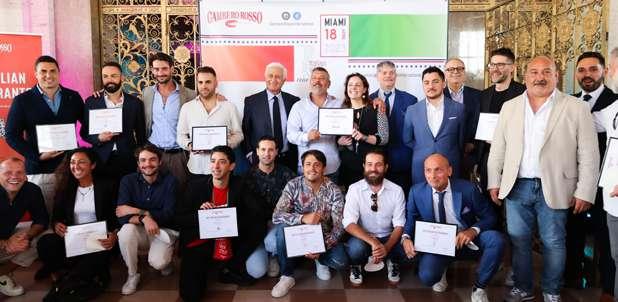
In the three American cities there is no shortage of places for good drinking. Each received recognition as the Best Contemporary Wine List, the award born from the collaboration between Villa Sandi and Gambero Rosso which is assigned to wine lists that are the result of skillful research work, but designed to be usable, fun and full of ideas and discoveries.
In Miami, the award goes to Doma: a new entry in the guide that brings together authentic and modern Italian cuisine, thanks also to the ability of Marco Giugliano and a well-articulated wine list, with many gems to discover, an exclusive selection of prestigious labels and a wide-ranging mix.
In Austin, the award goes to Il Brutto, a restaurant that mentions Sergio Leone’s film in the name and conveys a modern and sophisticated atmosphere. The cuisine incorporates and presents traditional Italian dishes imported by the chef in the United States, while the wine list includes more or less well-known labels and names that allow a contemporary and complete experience of Italian wine. Lastly, in Mexico City the awarded restaurant was Romina. Refined Italian restaurant in the Polanco district that embodies the perfect destination for every wine lover in the city. A truly fascinating wine list, not at all obvious, that brings together important labels and vintages, great names in wine and a selection by the glass and through Coravin that allows a full immersion in the Italian wine heritage.

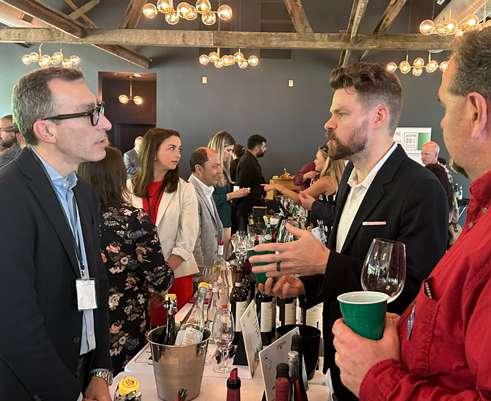






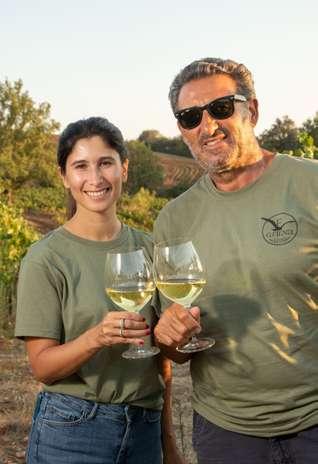
It is just five years old, but the Guido F. Fendi winery seems to have started off on the right foot. When a winery is born thanks to a mix of passion, targeted business choices and an exceptional wine-growing area, the premises for a good start are obvious. The Guido F. Fendi winery was officially born in 2018 in the Tuscan Maremma and the first thing that comes to mind is Guido F. Fendi’s passion for this beautiful territory: a place that he has visited since he was young and that he always admired for its wild nature. A passion that also led him to choose where to start his winery. We travel back to the year 2000 when Guido’s first steps in the realisation of the project came to be. First of all he found the land, in the heart of
Maremma, near Manciano; here he began to imagine and draw everything following his vision. The unique composition of the soil, made up of multiple layers of rock and clay, and the proximity of the sea – which influences the aromas and salinity of the wines – were the two peculiarities that convinced the founder to go ahead with the project.
«The foundations of the project were based on preserving and taking care of nature, showing a holistic approach to the land and focussing on quality as the main driver to achieve the final product – Giulia Formilli Fendi, Guido’s daughter, tells us – The first wine we bottled was a Sangiovese, the only grape we had at the time and
it was meant for friends and family. It encapsulates our origins, and so our first label was created: Idillio Maremmano. After this first milestone we started planting other varieties and in 2018 the Guido F. Fendi winery was officially born, under the guidance of oenologist Andrea Pala, who was welcomed as part of our family and business, and has since shared our values and our vision. We are a family-run business – explains Giulia – and, as such, we adopt the same principles with which we were raised in our daily lives.»
Giulia is currently employed fulltime in the company and we find in her all the passion from which her father started. She talks to us about the company and its projects
and her desire to develop, to build shines through her eyes. Wine as a symbol of a territory, as a sign of culture, as a value of tradition, not just as something good for the palate: «After a few years working on marketing and branding aspects, I now manage, together with my father, the whole project. To date we have a portfolio of 9 labels that give us great pride, we are designing the cellar which will be built underground with minimal impact and the tasting room which will overlook the vineyards. The completion of both will take place in May 2024 and will mark another important
step in our growth path.»

Giulia knows very well that there is a long way to go, also because the goals to be achieved are important and ambitious. «We are a young and modern winery and we have clear ideas about the future – Giulia smiles – We want to grow and improve as much as possible, year after year, starting from the vineyard and the cellar to get to the marketing, communication and retail of our labels. We do this by keeping an eye on technical innovation and at the same time keeping values firm in respect of the traditions of our land.»
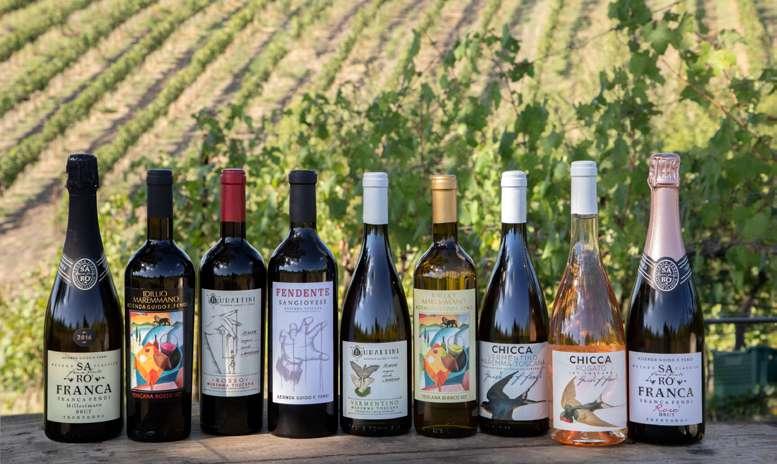
AAlso on the Vini d’Italia Guide the onset is correct. Two wines presented and both evaluated very well. We are talking about two whites, both made from Vermentino grapes. The first is the Maremma Toscana Vermentino Chicca DOC, fruit of the 2020 vintage and winner of Due Bicchieri Rossi. The wine reached the finals of the Tre Bicchieri seamlessly, strong in complexity and textbook persistence which manifests itself on the nose with aromas of yellow fruit, almonds, aromatic herbs; while in the mouth it is sapid, fresh, deep and very clean. The Maremma Toscana Vermentino Burattini DOC, same vintage (Due Bicchieri) plays more on immediacy. Citrusy, floral, with a slightly spicy touch on the nose; it has a smooth, precise mouth with a slightly bitter finish.

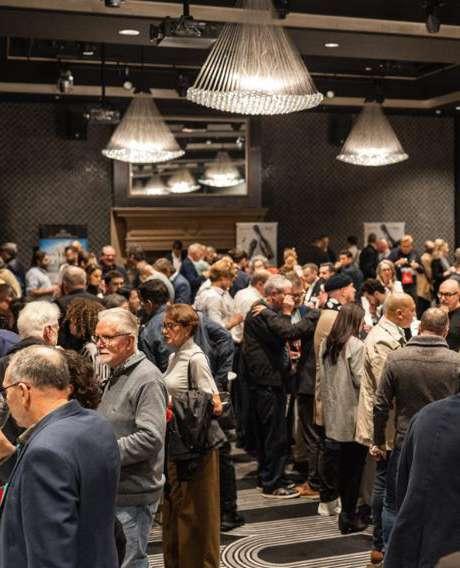
Gambero Rosso returns to Oceania with Italy’s best wines. Here is our trip report

Tasting Italian wines almost 20,000 kilometres from our borders has a different flavour. For the second consecutive year, the home of the America’s Cup, the New Zealand Royal Yacht Squadron in Auckland, complete with a spectacular view of the Pacific, has hosted the Gambero Rosso international tour. On May 12, about twenty wineries reached the country of the All Blacks which boasts a small but warm Italian community, in all there are about 2,000 Italians residing in New Zealand. Among these we met Antonio Crisci, who in 1990 left Naples by boat to travel the world. Two years later, he landed in New Zealand where he opened several Italian restaurants.
“When I arrived there was no olive oil, there were no Italian labels, we basically ate lamb meat and very little fish,” he tells us. He was the first to import cult wines like Masseto into the country; today he has retired to the delightful Waiheke Island, a replica of the Mediterranean, a thirty minute ferry ride from Auckland. Here he produces olive oil and wine, from Italian cultivars, and leads the Poderi Crisci restaurant, awarded during the event with Due Forchette in the Top Italian Restaurants guide.
Today the restaurant scene is increasingly competitive, the Asian influence is very strong, with highly sought-after wine lists and an articulated presence of Italian wine. The Auckland event was preceded by a trip organised by Gambero Rosso to Marlborough, where the Italian wineries visited seven renowned local wineries in the area for a profitable all-round exchange.
Just under three hours by plane, it was Sydney’s turn on May 15th. The autumn colours of the trees in Hyde Park framed a vibrant event with almost 60 wineries as protagonists, and 4 well-attended seminars led by Lorenzo Ruggeri and Giuseppe Carrus.



Despite the distance from the homeland, Italian dining in the city is one of the most competitive and commendable on a global level, as many as 15 venues were awarded during the event. “Post-pandemic, fine dining restaurants have suffered a lot, many historic names closed, the focus is so much on different places, with larger numbers and perhaps even the bakery section for a different use”, says Federico Zanellato, Tre Forchette - the only one in Australia - with his LuMi and Due Forchette to Leo. Lately he has also opened two top-level pastry shops, Lode, for many of the best croissants and pies in Sydney.
On the wine front, the natural sensibility is very strong, wandering the city’s locales we found many Italian artisans,
There were numerous in-depth moments dedicated to Prosecco Doc, starting from Auckland, an absolute premiere for the Consortium. In addition to the seminar in the home of the America’s Cup, there was also a promotional dinner in the Non solo pizza restaurant, in the presence of the President Stefano Zanette, between classic and unusual pairings. A moment to talk about prosecco culture, territory and imitations: Prosecco Doc can never be sold in cans or on tap. The seminars ranged between the different dosages, with a focus on Prosecco Rosé, which has reached around 60 million bottles sold. The format has been replicated in Sydney and Melbourne, in dialogue with the local press which defends Australian prosecco producers to the hilt.


As per tradition, the award for the best contemporary wine list was presented at each stage. In Auckland the recognition went to Pasta e Cuore, a pasta factory with an excellent wine list, with gems such as Prosecco Col Fondo and small artisans offered at correct markups.
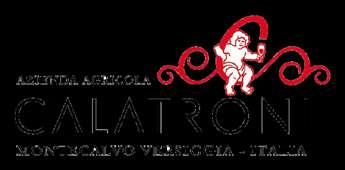
In Sydney, the award enhances the work of Chef Alessandro Pavoni who in his a’Mare has built an elegant cuisine combined with a refined wine list, very articulate and deep with vintages and different stylistic tones. Finally, Melbourne’s contemporary menu is Scopri, with a very attractive by the glass offer, for a clear, usable and very well thought-out wine list.
but also Australian ones, think Tom Shobbrok or Patrick Sullivan, who work according to this production philosophy. The two award-winning wine bars represent this sensitivity: Fratelli Paradiso and Paski Vineria Popolare of Giorgio de Maria “Here in Sydney the natural wine wave arrived even earlier than in Italy, at the moment I am worried because many young people are moving away from the movement, there are many producers who are creating confusion and consumers are disoriented,” Giorgio tells us.
Two days later, on May 17th, the Top Italian Wines Roadshow took place in the most European of the Australian cities: Melbourne. Also in this case the seminars demonstrated a strong attachment, but also a deep knowledge of Italian wine, fueled by over 50 Italian wineries representing the country.
The debate on Prosecco was heated, several local journalists claimed that they did not recognise the Italian DOC established in 2009 because it was contrary to the history of the variety.
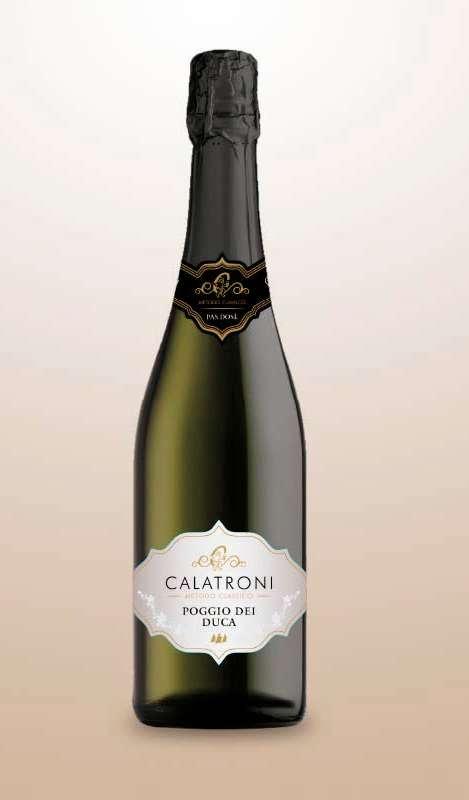
While on the dining front, Neapolitan pizza stands out and an ambassador, Johnny di Francesco, Due Spicchi for his 400 Gradi. “The first few years were really difficult, customers would always send back the dough because it wasn’t crisp. Today we have 8 branches in Melbourne, and we have also just opened in Dallas, where we will soon double with our brand.” Among the most appreciated wines there are also lesser known varieties such as bellone and susumaniello, confirming an extreme curiosity and oenological opening.










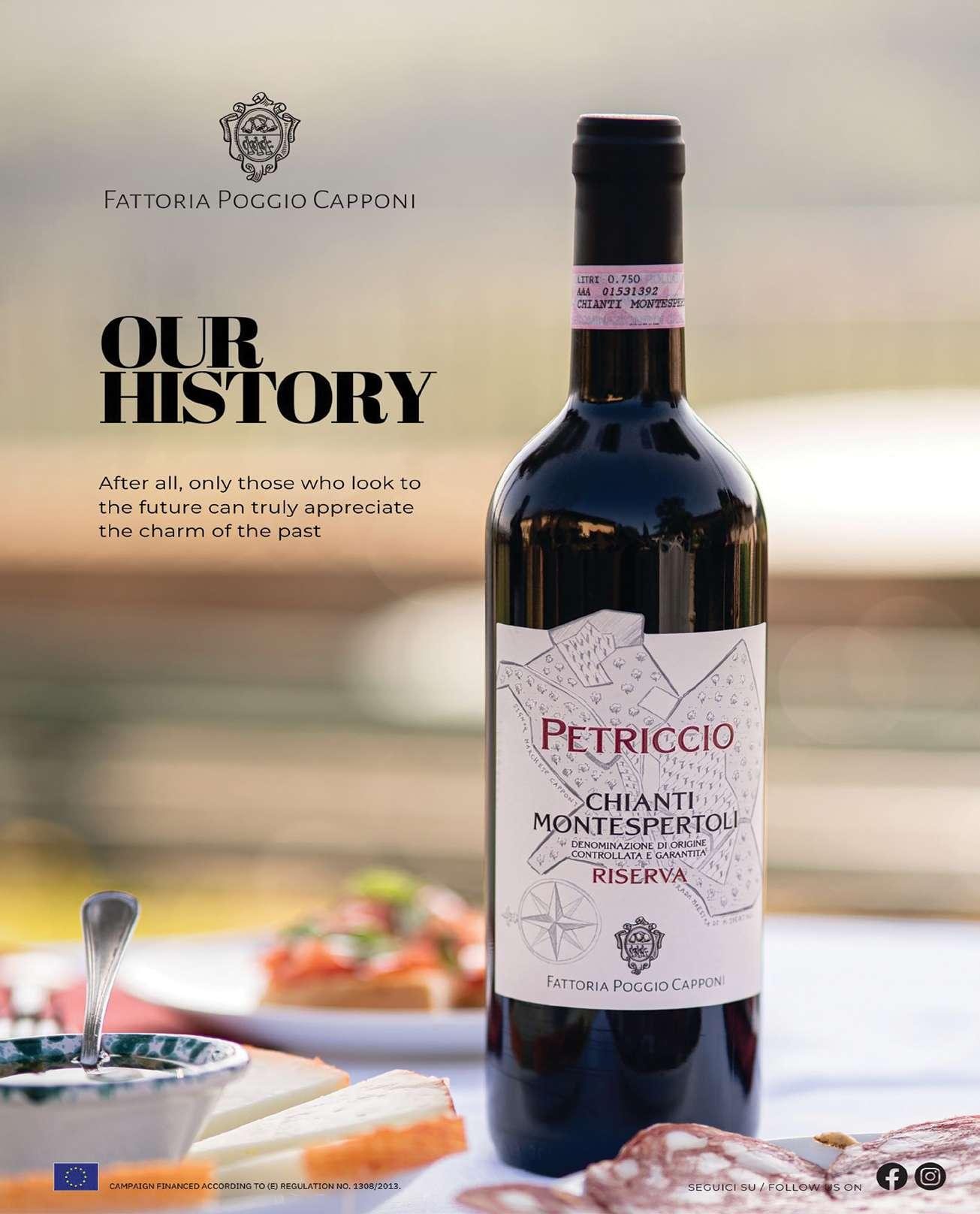

An area that winds along the Alpine valleys, on the most suitable plateaus, on slopes that are sunny during the day and cooled by night breezes at night; but at the same time also with Mediterranean glimpses and warm hills. This is Alto Adige, one of the smallest Italian wine regions (5,600 hectares of vineyards, less than 1% of the nation's production) which however offers a very complex and varied mosaic of territories, grapes and microclimates which makes it one of the most interesting terroirs in the Italian landscape. From sun to ice, from lakes to mountain terraces, a truly unrepeatable natural spectacle takes place in just a few kilometres. The slopes of Val Venosta, the sunny hills of the Bassa Atesina,
the alpine vineyards of Valle Isarco, the verdant shores of Lake Caldaro: in just a few kilometres, the landscapes of Alto Adige change scenery, climates and geological soil matrix. The topography of the wine-growing areas of the region is a truly variegated picture, a mosaic of a thousand tiles that increase dramatically if we also consider the vineyards with different exposures, altitudes, and heterogeneous microclimates. Thanks also to the soil substrate, a veritable geological journey between different soils:
ranging from volcanic porphyry to metamorphic rock of quartz and mica, from calcareous or dolomitic soil to marl. Eduard Bernhart, Director of the Consorzio Vini Alto Adige explains: «South Tyrol is a truly variable universe from a geomorphological point of view and this means that, despite its small size, we can find both "heroic viticulture", with vineyards at 1,000 metres above sea level, is a "Mediterranean" viticulture, with often extreme summer temperatures. The mountain is our great ally. In fact, the protection
Unique wines born from one of the smallest wine areas in Italy. Thanks to millenary experience, a diversified terroir and lots of passionGAMBERO ROSSO GAMBERO ROSSO X VINI ALTO ADIGE
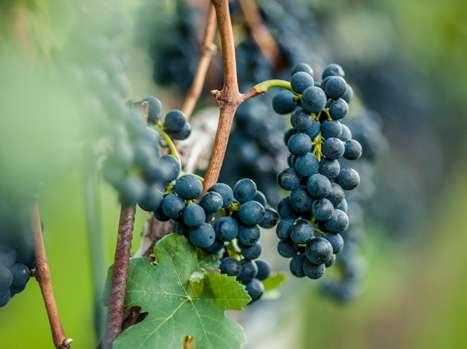
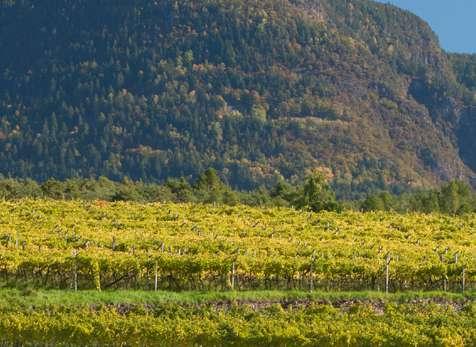
offered by the Alps to the north and the large opening to the south influence the slopes cultivated with vineyards in a unique way, from the valley areas to the highest peaks, yet with an Alpine character. Depending on the variety, the grapes grow at altitudes between 200 and 1,000 metres above sea level. The crisp mountain air contrasts with the Ora, the warm wind of Lake Garda and together they characterise the aroma of the wine production in an extraordinary way. In the Alto Adige vineyards, often very steep, manual work is still a widely used practice, and this meticulous care of the vines not only benefits the quality of the grapes, but also makes an important contribution to protecting the landscape.» A highly differentiated terroir which therefore allows many grapes to find ideal growth conditions here. In fact, in Alto Adige over 20 different cultivars are grown on soils of various conformations and at different altitudes. This allows the more than 200 wineries present in the area to offer excellent products, with an unmistakable origin and known throughout the world for their quality. After all, Alto Adige is the only Italian production area that embraces, with wines of the highest level, the whole range of oenological genres. There are so many white grape varieties that bring regional quality to the world, some of which represent real icons appreciated and recognised around the world: among these we must mention Gewürztraminer,
A new project connecting wines and territories

There are over 5,600 hectares of vineyards in Alto Adige; they extend over a territory that in just 40 kilometres, from north to south, also varies quite profoundly. These range from the slopes of Val Venosta to the sunny hills of the Bassa Atesina, from the alpine vineyards of Valle Isarco to the verdant shores of Lake Caldaro. And the climates and geological matrix of the soils also change with the landscape: thus a truly variegated viticultural picture is created, a mosaic of a thousand tiles that increase dramatically if we also consider the vineyards with different exposures, altitudes, heterogeneous microclimates. So much so that often substantial differences emerge from one village to another. Thanks also, as we said, to the substrate of the soil, a veritable geological journey between different soils: ranging from volcanic porphyry to metamorphic rock of quartz and mica, from calcareous or dolomitic soil to marl.
which owes its name to the wine village of Termeno; Sauvignon, Pinot Blanc, Chardonnay and, again, Pinot Grigio. These are gastronomic wines capable of pairing absolute fidelity to the characteristics of the grape, to the typical products of the territory and to the great personality, while representing the ideal partner of cuisine from all over the world. Even among the red grapes, Alto Adige boasts its excellence, including the autochthonous Schiava, in continuous and irrepressible ascent, as well as Lagrein. The undisputed protagonist remains Pinot Nero, considered the most regal of the reds of Alto Adige which here stands out for its class and presence. Also worth mentioning are Cabernet, an elegant, structured and aromatic variety, and Merlot, round and persuasive. An immense oenological heritage that was presented at Vinitaly, the international wine and spirits exhibition held in the Veronese city from 2 to 5 April 2023. During these days, in pavilion 6, stand C2/D2, the wines of the Alto Adige in fact
5,600 hectares
98% DOC production
5.000 winegrowers

274 wineries

20 grape varieties grown

186 partners
10,000 attendants
40 million bottles produced
64% vineyards: white grapese
8% organic farming
33% export
8% surface farmed in organic regimen

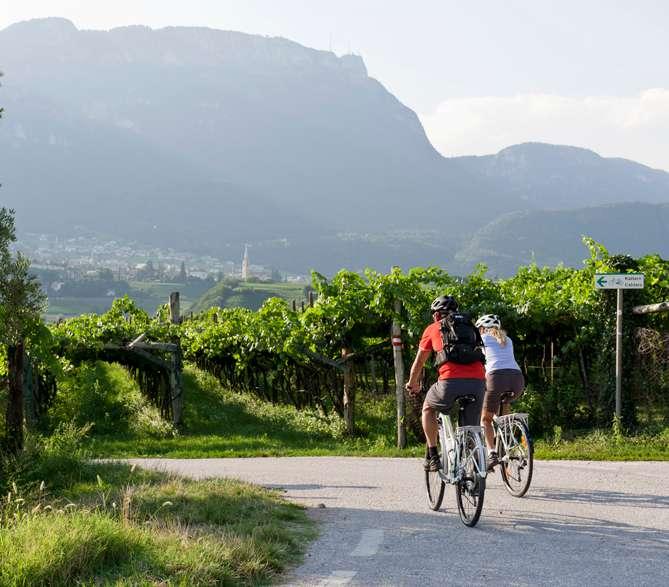
were the protagonists of the four days of events through thematic tastings with the aim of accompanying the visitor on an ideal journey to discover the different declinations of this extraordinary wine area. A success story that of Alto Adige wines that starts from afar. Suffice it to say that this territory is among the Italian wine regions which, more than others, have taken a path made of quality and credibility of the wines produced with determination and ambition. In fact, since the 1980s, Alto Adige viticulture has experienced a boom that still shows no sign of stopping today. The factors that have contributed to this phenomenon can be found in the selection of grape varieties based on the vineyards and their most suitable territories, in the drastic reduction of yields, in the adoption of cutting-edge technology and methods both in the vineyard and in the cellar and, certainly, in the meticulous search for the highest quality of our grapes. To this must also be added the great spirit of collaboration that has always inspired all those who work in this sector. This leap in quality has been so substantial that today 98.8% of the Alto Adige vineyard area is protected by DOC regulation, a far higher share
than any other Italian region. «We believe that in recent years – explained Andreas Kofler, President of the Consorzio Vini Alto Adige – the Alto Adige wine sector has taken the right path: quality policy, internationalisation, sustainability. Operating in the premium segment and having a broader global positioning proves to be especially important in a challenging context such as the current one. For this reason, we want to continue pursuing this strategy with consistency and commitment.»
Faced with this priceless heritage, the Consorzio Vini Alto Adige has deemed it essential to look to the
future with the aim of increasingly enhancing the identity of its wines. Therefore, a process was started that led to the revision and development of the territorial delimitations of the Doc arriving up to the introduction of the Additional Geographical Mentions in the consolidated text of the Denomination. «The aim – explained Director Eduard Bernhart – is to bring our products into a greater identity dimension, in which our wines are increasingly rooted in our vineyards and representative of our territory. Zoning is a process still in progress as today it is still on the approval table at ministerial level.»
Activity carried out with the contribution of MASAF, pursuant to directorial decree n. 553922 of 10/28/2022
Consorzio Vini Alto Adige
Bolzano - via F. Crispi, 15 - 0471978528 - vinialtoadige.com
fsuedtirolwein.vinialtoadige - $altoadigewines - tAltoAdigeWines

“A long story to discover sip by sip.”
After ten years of controversy, many of the values underlying the new movement are finally affirmed
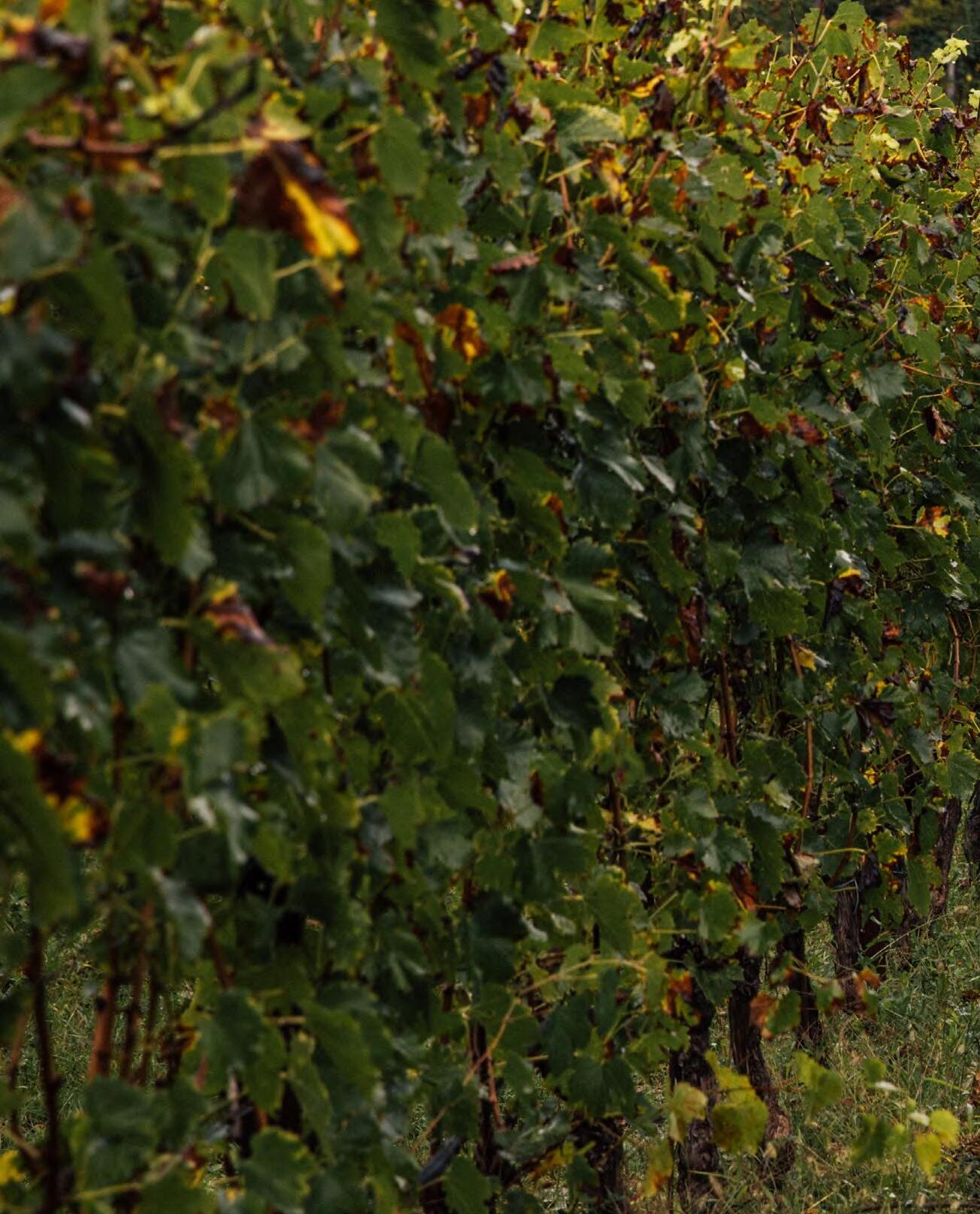 by Lorenzo Ruggeri – photos by Glauco Canalis for Agricola Foradori
by Lorenzo Ruggeri – photos by Glauco Canalis for Agricola Foradori

Enthusiasm, pioneering spirit, authenticity. Natural wine has several analogies with the free radios of the 70s. In both cases there was talk of fashion, passing trends, youthful shenanigans on the verge of legality. Ten years after an editorial that inflamed the sector (see sidebar), we return to a movement that has had a disruptive force, anticipating times and themes. Natural wine is everywhere, even if it doesn't exist by law. The common definition indicates a wine produced through organic or biodynamic viticulture, fermented with indigenous yeasts, vinified in the least interventionist way possible in respect of its uniqueness; only a minimum dose of sulphur dioxide allowed during the bottling phase. At Gambero Rosso we have always preferred the term artisan wines, products that continue to raise discussion, they push
us to look beyond the glass, to reason about their agricultural sense. They regulate the identity of winegrowers and holy drinkers. And they polish our passion.
Like for the Super Tuscans, which in the mid1980s marked a moment of strong rupture and discontinuity, the natural qualification for wine came from critics and market, not from certifications. Identity defined itself in opposition to a dominant taste and language. «We had sensed a change in the air, when faced with so many standardised wines the demand for originality, for honesty of taste, was growing. It was the younger generations who embraced the cause. They have a different cultural palate and are more open-minded. The status quo of wine, on the other hand, ferociously attacked the movement,» tells us Luca Gargano who in 2003

launched Velier and the "Triple A" manifesto (Agricoltori, Artigiani, Artisti), the best known catalogue of natural wines in Italy and regulated by an internal protocol. The generational factor was the keystone, a constant that we find again 20 years later. Young people often approach the subject starting from these wines, perhaps arriving at it through craft beer. Plus, being accustomed to a certain type of beverage, they will hardly change course. Even in the world of wine critique, the split on the basis of demographic is evident, think sommeliers: tell me their age and I will be able to tell you which wine list they have drawn up.
At trade fairs focusing on natural wine, the average age is 25-30 years, incredibly younger than the white hair we see in many vinous events. The exchange, as with free broadcast radios, takes place on a transversal level, a language that is more emotional than technical: young producers speak to peers, the cultural context matches. Pressed by the need for shared legislation, Gargano relaunches with a provocation: «The real question to ask is: shouldn't natural wine simply be wine? Why must the best expression of a territory be produced using chemistry? And the DOC wines, so accurate and rigorous, why do they authorise laboratory-selected yeasts and additives that have nothing to do with a sense of place?»
Let's tune in to the Dolomites, Elisabetta Foradori made clear choices, in 2002 she embraced biodynamics as a lifestyle and vision of the world. Hers are among the most sought-after Italian wines at an international level. «The new generations are approaching wine to reassert themselves in a world that is going in an uncertain and opposite direction. They are curious, their choices have to do with a different lifestyle: how you live, how you eat, how you dress, how you heat your house. This adds to the wine, which in itself enters the sphere of myth, a strong message, even political flavour.» She

In January 2013, the monthly issue of Gambero Rosso published an editorial by Eleonora Guerini that triggered the controversy. Here are some key excerpts:
Every time I hear about natural wine I instinctively laugh. Because if there is something that just cannot be natural, it is wine. The relationship between a cherry on the tree and the man who picks it is, in a pinch, natural… How can wine be natural, if we want to give this term the meaning it has and not the golden populist morally correct, it's something incomprehensible to me. A vineyard planted, managed, cared for, with chemical, organic, biodynamic or prehistoric methods, a grape harvested and then vinified, the resulting wine matured, then bottled and sold, often in the most varied corners of the planet… How can we, with all the human intervention involved in producing wine, speak of natural approach? You simply can't. But it's being done. Often because it's cool, in the best case scenario because people don't even reflect on the meaning of the term being used. By smuggling the choice of archaic, primordial methods as a natural choice. Instead, it is often a sort of Luddism, a priori negation of technology, without going into the merits of the final quality. Not poisoning the earth is a commendable choice as well as a sacrosanct practice… If a winemaker chooses not to use any synthetic product and to take risks with the vagaries of the weather and to bet on the strength that a plant grown without chemicals can achieve, it's applause worthy. Provided that the lucidity and intellectual honesty are such as to make the choice, in the face of a shaky harvest, not to use and not to transform those grapes into wine that's volatile, or with evident oxidation. I don't think the choice of bio-something should ever be to disguise defects with the excuse of "natural," much less convincing to me is the mantra according to which "natural" wines is an acquired taste, a path that needs time. Again re: the biodynamic world, I don't remember ever having too much trouble understanding the wines of the Domaine de la Romanée-Conti. Maybe because they are first of all good?
Gone are the times when producers boasted the use of barrique on their labels. In place of the "small oak" barrel we increasingly find the shape of terracotta amphorae, the first historic container for wine, one of the symbols of the natural wine movement. Let us remind readers: wine in amphora does not automatically imply that it is natural wine and is not synonymous with orange wine. We humbly point out that many of the best wines in the world continue to rest in the "fearsome" small barrels. It all depends on handling them with the right sensitivity, we are living in a phase of intense experimentation. «The Greeks and Romans used amphorae in theatres to amplify the voice of the actors, in wine it amplifies the flavours, aromas and memories of our territory. It helped us to express our sensitivity, our grapes. It manages to be delicate, it does not transfer aromas, it is neutral but accentuates the characteristics of the wine,» Mario Basco tells us that in the cellar he works with small amphorae with stainless steel closures from Impruneta, the Tuscan centre at the forefront of clay pottery.
Josko Gravner was the one who cleared the Caucus tradition in Italy, enlightened during a trip to Georgia. «The amphora is the container that allows us to reduce our intervention and to accompany the wine according to the vintage. They are buried and the vinifications last from 2 to 4 months. So far we have stopped at 2,500 litres but we will also reach 3,000 and we are working on a garden just for them,» Mateja Gravner tells us. Foradori has decisively opted for Spanish amphorae, in this case the tinajas of Villarrobledo. «For us, the amphora was the tool to keep the message of the territory in the purest way inside the wine. Leaving this infusion on the skins in the clay for 6-7 months was the turning point. How the clay is shaped is fundamental, wood-fired is on another level compared to amphoras baked in electric kilns, there is a relationship with the living material: this continuous exchange between grape skins and liquid, the shape, even irrational elements, the symbolism.»
Recently, many wineries are using them not only for vinification, but also for ageing, above all with reds. With ever hotter and more mature harvests, the amphora better guarantees the integrity of the fruit (due to reduced oxygenation) and does not release toasted aromas. Today the sealing wax formula, amphora and maceration lends itself as a powerful, and even dangerous, marketing tool. The amphora can help, but it doesn't work miracles: it is a mere container. Among the many producers who have used it (and with excellent results in Italy over time) we mention: Vodopivec, Giotto Bini, Cos, Luigi Spertino, Vino di Anna and Possa.
does not mince words to comment on the teachings of classical oenology. «I am 65 years old, my generation was not very idealistic, we are children of a time in which less attention was paid to nature, the legacy of a post-war culture, of a certain idea of consumption and well-being. At one point I no longer found myself in everything they had taught me, I had lost contact with nature. Biodynamics doesn't just mean removing chemistry, but finding a balance to restore fertility to the soil in a complete manner. Today 99% of agriculture works on dead soils because without the addition of fertilisers they produce nothing.» In Elisabetta's vision, the company cannot live on the vineyard alone, but must include animals, composting and other crops.
The other aspect of the movement, certified in our continuous travels, is the exquisitely metropolitan dimension and on a global scale. Among the capitals we include Paris, Copenhagen, Tokyo or Seoul if we look to the East. The last frontier is China: «In recent years many wine bars have opened exclusively pouring natural wines, three in Shanghai in a few months and even in my restaurants they are increasingly in demand», says Daniele Salvo, owner of two excellent pizzerias in Beijing and Shanghai. It's a short stride from avant-garde to product category, just like with the transition to commercial radio channels. The transformations in the glass go through the kitchen. The frequent long macerations for the whites bring back a new bitter dimension, a profile enhanced by the most daring cooks. The crystalline talent of Gianluca Gorini shines: in San Piero in Bagno, in northern Romagna, between high flame cooking and signature flavour combos. «The wines aged in barriques, full and round, with a great gustatory impact, were in perfect symbiosis with the cuisine of 20 years ago, when we had opulent dishes with rich sauces. Today we are far from that. My cuisine is lean, vertical, one that determines other tastes and calls for very drinkable, vertical, acidic, mineral, sharp wines. These are the profiles I look for when I cook,»

he tells us. We are increasingly accustomed to a way of cooking that has eliminated fat, sweet taste, even desserts are less sugary. It's a strong food and wine change, people come to a restaurant looking for something else, they no longer stop only at the good or bad. They want to know the whys and wherefores,» explains the chef as he pairs a risotto with mushrooms and tobacco, almonds and nepetella with the contrast of Paolo Francesconi's Arcaica wines. Sometimes the wine becomes an integral part of the dish itself, as in the case of orange blossom sweetbreads and Gravner's Ribolla Gialla, served in two distinct moments. We are in Dina's living room, in Gussago in Franciacorta, a sociologist in the kitchen: Alberto Gipponi, a true genius.
«Haute cuisine tends to prefer artisanal products that allow a certain type of control and imperfection. I find inspiration in certain complexities and freedoms present in these wines, let's call them controlled edges. The future? There will be less and less talk of natural, because it will just be like
this, not a choice, but a structural necessity,» he comments. Let's venture: would Noma in Copenhagen have ever existed, and all that it has generated, without the tension of natural wines? Probably not. Acidic peaks, edges, fermentation, unpredictability: the naturals have liberalised parameters set by years of courses hanging tastevin around necks; the excess, still evident today, is typical of transition phases. Before our eyes we have a map of places dedicated to sustainability, zero kilometre, zero-waste, with large selections of natural wines, frequented mostly by customers who take an intercontinental flight to eat onions pulled from the garden.
LaThe growing demand and visibility has upset the strategies of many wineries, the most powerful weapon of the movement has been contagion. «The smaller operations have had a positive influence on the larger wineries, leading them to review the way they make wine and
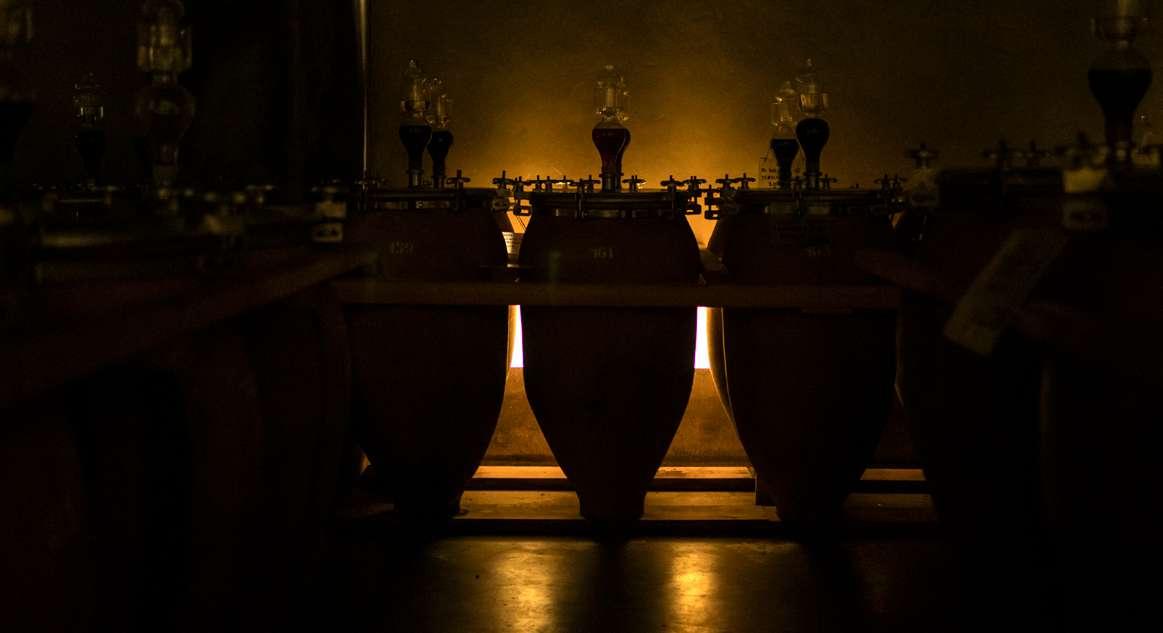
A world that considers Josko Gravner's work to be extreme is a world with many problems. Located in Oslavia, in the Gorizia Collio, this is a borderland. That visionary Josko has never adhered to any label, but his coherence of thought and action is a point of reference for everyone. A lot of work in the vineyard, Caucus amphorae, long macerations even for the whites and a lot of patience: 7 years for his Ribolla and 14 for the riserva. The wines of Josko and his daughter Mateja are powerful, unpredictable and exciting.
Stanko
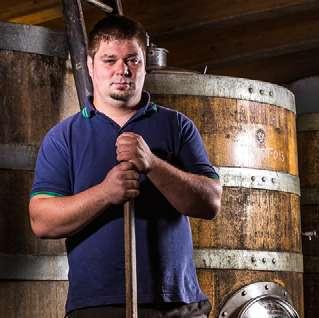
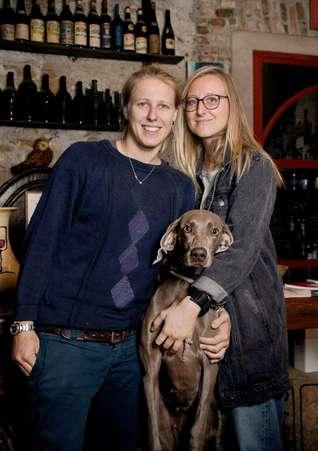

Stanko was a sincere man who pursued personal independence and a bond with his land with enviable rigour. He has always kept away from guides and press, making his wines speak above all of very low yields, optimal maturation and very long macerations. Together with Gravner he was one of the fathers of orange wine, already produced in the 1990s from the vineyards in Oslavia. Since 2016 the baton has passed to his son Sasa: wines full of edge and contrast.
A Belgian struck by Mt Etna and by the idea of enclosing the energy of the volcano in a bottle. Frank's wines are unique, the result of a very personal and original interpretation, which in recent years, without losing their initial spontaneity, have gained a lot in terms of cleanliness and definition. And after having introduced Etna wines all over the world, he is now increasingly appreciated in Italy as well. "Natural wine? Artisanal, low-intervention is a better description for me,” says Frank.

Beppe Rinaldi did not want to become rich or famous, always looking for a life in harmony with nature which he hoped could at least embrace his beloved Langhe. His daughters Carlotta and Marta continue headstrong in the search for maximum purity in the vineyard and in the cellar through biodynamics. And they relaunch with the acquisition of a new Barolo cru, from the 2019 harvest there is also room for the Bussia di Monforte d'Alba..

Arianna Occhipinti's approach to natural has been a powerful model: the relationship between terroir, climate and biodiversity is harmonious in what Arianna happily defines as "accepting," i.e. the profound respect for the identity of the vineyard, achieved through farming in which the human component meets nature without forcing the hand or artifice. A path born almost twenty years ago along Provincial Road 68, which flows between vines, olive trees and dry stone walls. Her Frappato, in particular, has reshaped the concept of drinkability.

Stefano Bellotti was a true pioneer of biodynamic in Piemonte, on the border between Novi Ligure and Tassarolo. His Nostro was one of the first wines in Italy to make people talk about organic and biodynamic, carrying on a difficult and uncomfortable battle, when natural-type field management was not seen as a marketing tool. The wines of Cascina degli Ulivi are particular, they need time, a slow approach and not very suitable for the inevitable frenzy of battery tastings.

From heretic to revered master: forcing but not too much, this is the trajectory taken by Emidio Pepe in his more than ten-year career as a producer in Torano Nuovo, Colline Teramane. It was he who began the bottling of Montepulciano and Trebbiano in the 1960s, maintaining the almost ancestral approach inherited from his father and grandfather. Becoming a true symbol of the natural movement for the organic and biodynamic management of the vineyards, spontaneous fermentations, the processes in the cellar without clarification or filtration, and long resting in concrete tanks.
Few bottles, few words, great wines. From Castelnuovo Berardenga, in the deep south of Chianti Classico, Giovanna makes a fine Sangiovese, with its edges, its original and stimulating textures, while fine and tenacious at the same time. She wanted to recover the alberello, high-density training system, she was inspired by biodynamic principles and has a great hand on macerations and on the interpretation of the vintage. Talent and sensitivity that we find in bottles that give us far-reaching thoughts.
Elisabetta Foradori
She has enviable charisma and authority. Elisabetta Foradori has never been satisfied with the results obtained by simply respecting the vigour of the main grape variety of her company, Teroldego. She has always challenged standardising agronomic habits and has chosen biodynamics as her philosophy of life and of the vine. Her company has been completely reconverted to crops that respect nature and in the cellar amphorae have replaced much of the steel tanks. In the company, in a totally circular fashion, we find her children Emilio, Theo and Myrtha.
Angiolino Maule
Man does not control, does not impose, does not correct but rather supports and accompanies. At Biancara, Angiolino Maule was ahead of his time by carrying forward certainties that have influenced many producers: seeking spontaneity, wholesomeness and accepting the beauty of imperfection in wine rather than the homogenisation of large numbers. With his company in Gambellara, between Vicenza and Verona, he has carried on challenges that have merged into the VinNatur association which he has presided over since 2008.




above all work in the countryside. Treatments have ruined soils, to make good wine you need to make it organic with conscience and competence; also because substances such as pyrethrum that kill everything are still allowed,» says Luca D'Attoma frankly over a good glass of Cabernet Franc hailing from the Tuscan coast. He is an oenologist and owner of Due Mani: «The great merit of having called everything into question must be given to the movement. Many of my colleagues have had to reset themselves,» he adds. In one of the many wineries with which he collaborates, Poggio al Tesoro, he has just converted 70 hectares. «After only two years the wines are less green. The bees and insects have returned to the vineyard, the musts have completely changed, you don't smell when you leave the vineyard, the quality of life changes.» And there are those who play with masks. «There are producers who in a normal context are dressed in designer clothes and look sharp, then I find them in Demeter situations (a private certification body for biodynamic agriculture, Ed) and they have dirty boots and hands to appear as natural,» smiles Luca. And, we add, it is virtuous to pamper the plant with nettles but if the first reference market is Australia, something doesn't add up. Data in hand, 80% of Italian wines certified organic are exported.
 Emidio Pepe
Emidio Pepe

Most of the messages of the movement have been welcomed by the sector on the whole: agricultural practices, the search for lightness, spontaneous fermentations, the mantra of drinkability, the return of the amphora (we talk about it in an ad hoc sidebar) and, again, the joy of refermenting in the bottle, the focus on sulphites, the absence of clarifications. Compared to the early rock'n roll, some winemakers have changed genres, with more defined and measured wines. There is no shortage of knockout volatile acidity, brett and homologating macerations passed off as the truth by those who have no other arguments at hand. And criticism, not far from those raised in that 2013 editorial, today comes from within the movement. The discriminating factors remain seriousness and talent, many producers no longer want to hear about natural. A new phase opens. «Twenty years ago an incisive but inappropriate adjective was needed to break the mould, now it has become a tinsel that we carry with us, used by large marketing agencies to renew the image of companies that have nothing natural at all,» ventures Mario Basco of the Cacciagalli winery, in Campania. «The central theme is what we will leave to our children, enhancing the territory in the best possible way, with synergies and not closing ourselves in one camp or another.» Mario has taken up the model of an old farmhouse, next to the rows we find olive trees, legumes, vegetable gardens, animals, forests. Polyculture is the arrival point of the path for many winemakers who become allround farmers. Oslavia, on the other hand, proposed one of the most popular starting models. Mateja Gravner doses her words: «We are happy to have been a source of inspiration and reflection for many, everyone will then find their way. Let us remember, however, that when someone buys a bottle, that person is giving us his time. First of all we should be respectful of that.»
Lucidity of thought and action. This wine producer needs no label thanks to work of extraordinary charm and masterful execution. Everything else is a means: biodynamics and syrah, for example, used to convey the most original territorial traits in the glass. The winery is located in Poggiobello di Farneta, near Cortona (Arezzo). More than a new reference, a continuous and increasingly aware path, starting from the first harvest: 2006.
The creation of Gianluca Bergianti and Simona Zerbinati, with the contribution of Daniele Capiluppi, is one of the virtuous emerging wine realities. Located in the land of Lambrusco, in the province of Modena, biodynamic philosophy, a lot of manual work for refermentation in the bottle on authorial yeasts. Not only wine but also vegetables, grains, legumes and fruit are produced. The chickens, three donkeys and a horse complete the closed cycle.


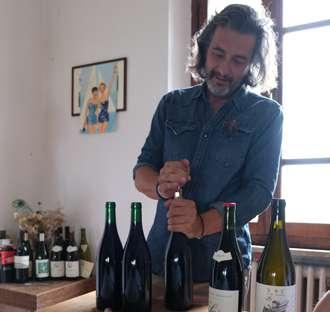
We are in the lands of Prosecco, in San Pietro di Barbozza, Valdobbiadene. Christian Zanatta, after experience in New Zealand, returned to the old family vineyards planted with glera according to biodynamic principles to relaunch refermentation in the bottle. His col fondo Proseccos do not last long both on the market and in the bottle: rustic, gluttonous, compulsive drinking.
We are in Faro Superiore (Messina), on the slopes of the Peloritani mountains, on wooded hills thick with oak and chestnut trees, between the Tyrrhenian and Ionian seas. Here Giovanni Scarfone, after his father Carmelo, cultivates vineyards on bold terraces with plants that are over 80 years old. In the vineyards and in the cellar, obtained from a nineteenth-century building, the production philosophy is rigorously aimed at restoring the natural and biodiverse nature of the cultivated and vinified fruit. A lot of sacrifice and a truly commendable quality consistency.

Diana Iannaccone and Mario Basco's winery is located between Teano and Caianello, in the Upper Caserta area, at the foot of the Roccamonfina volcano. Here they are dedicated to the cultivation of just over 11 hectares of vineyards interspersed with hazelnut, chestnut and olive groves, in full respect of the biodiversity of the place. An eighteenth-century farmhouse is the backdrop to this winemaking adventure, to which a tavern and hospitality have been added over time. In the cellar they try to intervene as little as possible: the fermentations are spontaneous, the macerations are bold, maturations are in amphorae, large barrels and cement.
Podere della Civettaja is a small reality in the Casentino (Casina Rossa, Arezzo) located at about 400 metres above sea level. At the heart of the project are the passion and tenacity of Vincenzo Tommasi and Federico Staderini, formidable wine professionals of rare sensitivity. The farm was purchased in the early 2000s and Pinot Noir cuttings from France were immediately planted. The production, based on organic viticulture, provides spontaneous fermentation in cement vats, without clarification and filtration, with maturation in used barriques.
Tenuta di Carleone is owned by an Austrian, Karl Egger, with a British technical guide, Sean O'Callaghan, but immediately learning to speak the language of Chianti Sangiovese. Active in the highest sub-area, Radda in Chianti (Siena), a decisive element for the character of the company labels, has an artisan approach based on organic and biodynamic principles. In our opinion, one of the most intriguing realities of Gallo Nero, characterised by graceful and fragrant accents.


Up through the woods of the Martani Mountains on breathtaking hills ranging from 400 to 550 metres at Terzo La Pieve, in the municipality of Spoleto (Perugia). The Mattioli family is another virtuous model of a circular boutique winery. No chemistry is used in the vineyard, compost is produced by animals for soil fertilisation, spontaneous fermentation in open vats without temperature control, only fibreglass and steel vessels and no added sulphur. An old Trebbiano vineyard is the flagship.

Riccardo and Davide have dedicated a great deal of energy to this beautiful winery, strongly desired and made famous by Giovanna Rizzolio, advocate of the extreme natural nature of wine and always hostile to chemistry in the vineyard. The grapes grown represent the three classic types of the area, with Dolcetto and Barbera supporting the preponderant Nebbiolo, from which the two Barbarescos are born: Rio Sordo and Tre Stelle (Cuneo). The company philosophy looks to the classicism of tradition, interpreted with elegance and fidelity to the territory.
The cellar of Pina Marano, Pietro Topi and the new generation Federica and Francesco, has made the leap in quality among the Abruzzo wineries. The vineyards, conducted following the canons of organic viticulture, are located on the Teramo hills. In the cellar, for some time now, there has been a total remodelling of the path taken at the beginning, and nowadays the wines are born from spontaneous fermentation, followed by maturation in steel and wood of various sizes. Thus giving life to Montepulciano d'Abruzzo, Trebbiano and Pecorino of great character and drinkability.




Rosato Frizzante

San Vincent 2021
Bergianti Terrevive
Gargallo di Carpi (MO) terrevive.net
The crown cap holds a spontaneous refermentation in the bottle of an ancient clone of Lambrusco di Sorbara. Thirst-quenching, on the tongue it's cracking, crunchy, tastes of pomegranate and summer: continuous, vital and lashing.


Trebbiano Vigna Vecchia 2020 Collecapretta Spoleto (PG) –collecapretta.it
Trebbiano Spoletino is perfect at 600 metres in the woods of the Colli Martani. Fragrances of green tea, sage and walnuts in an iridescent and complex aromatic picture. It has gustatory lightness and articulation, dynamism and depth.

Trebbiano d’Abruzzo 2020
Emidio Pepe
Torano Nuovo (TE) emidiopepe.com
ntense, punctuated by salty and smoky notes reminiscent of toasted wheat


and almond shells. The palate is juicy, savoury and energetic, leading to a long and multifaceted finish of Mediterranean maquis.
Gli Eremi 2019 – La Distesa Cupramontana (AN) ladistesa.it
There is all the strength of the San Michele cru in this signature Verdicchio. Scents of wheat, chamomile and hydrocarbons. The mouth relaxes with a bold natural attitude, leaving a very tasty saline trail.
Vitovska 2018 – Vodopivec Colludrozza (TS) vodopivec.it
A pearl of the Karst. Rest on the skins happens in underground Georgian amphorae, then Slavonian barrels. In the glass it shines with its own light, it has energy to spare, the savoury articulation is so layered as to make us silly.
Nosiola Fontanasanta 2020 Foradori Mezzolombardo (TN) agricolaforadori.com
The grapes of a single vineyard in long infusion, 8 months, on the skins in
Spanish terracotta amphorae, tinajas, baked in woodfired kiln. Delicate with almonds only in the first few minutes, as soon as it warms up it shows character, length and many stimulating contrasts. What a wine!
Zagreo 2020 – I Cacciagalli
Teano (CE) – icacciagalli.it
This Fiano produced on the volcanic soils of Roccamonfina has so much energy. Sprint of ginger and citron, slightly smoky sensations, black tea and saffron. The mouth is full of vitality, deep and layered.
Ribolla Riserva 2010 Podversic Gorizia damijanpodversic.com The faint of heart should refrain. Heartbreaking its dried fruits, salted caramel, chestnut honey, sesame. Extreme ripeness of the grapes, maceration on the skins for 6090 days and aged in old barrels for at least 6 years. On the palate it is overwhelming.
Ribolla Gialla 2014 Gravner Oslavia (GO) gravner.it






Josko's wines are intense, rich, concentrated, hard, edgy. Then when tasted they seem to find a balance of their own, they stand on tiptoe and give pleasure and harmony. Balsamic essences and resins.
Vino di Anna Jeudi 15 Rosato 2022 – Vino di Anna Solicchiata (CT) vinodianna.com
The brightness in the glass is exceptional, it is worth lighting a candle for the night. The scents range from watermelon to pomegranate, tomato flavoured by the sun, and licorice. In the mouth it is dry, fresh and lashing.
Rosato 2019 Massa Vecchia
Massa Marittima (GR) massa-vecchia.com
Fabrizio Niccolaini is a true pioneer of natural philosophy. So much beauty in the glass: it is harmonious, suffused and deep. With some oxygen it
flies. From Massa Marittima a black Malvasia gem, with a balance of Merlot.
Irpinia Rosato
La Cyclope 2018 – Tecce
Paternopoli (AV)
We drank it three times and never quite understood it. Also for this reason we loved this pink Aglianico which tastes of capers, blood orange and pepper. It seems suspended in time in its only vintage produced.
Cortona Syrah Apice 2018 Amerighi


Cortona (AR)
stefanoamerighi.it
We walk in a forest among dark and inviting sensations: soil, wet leaves, cacao and juniper. The mouth is a true marvel: a jolt of flavour and freshness that beckons the table with a rare intensity. Brace yourself when you drink it.
Le Trame 2019 – Le Boncie
Castelnuovo Berardenga (SI) - leboncie.it
Colourless compared to its years, the breath is fine and measured with orange peel, withered violet, undergrowth. The mouth is like a

glove, it has savoury energy and impressive depth. The third half is outstanding. Call back in 20 years.
Pinot Nero 2020
Podere della Civettaja
Casina Rossa (AR)
Blindly it wins over important ones hands down. Sparkling, harmonious, light wine of blackberries and mint, Mediterranean maquis and pepper. The entry into the mouth is juicy, light, very fine, wonderful gustatory breadth.
Uno 2018
Tenuta di Carleone
Radda in Chianti (SI) tenutadicarleone.com
A great artisanal wine signed by Sean O'Callaghan. Sangiovese, aromas of berries, shrubs and spices meet refreshing citrus accents, the sip is contrasted and reactive. The finish is 100% Radda in Chianti.

Valpolicella Cl. San Giorgio Alto 2017 – Monte dall’Ora Castelrotto (VR) montedallora.com
What a Valpolicella. It gets rid of the superstructures due to drying and finds a new point of bal-

ance, where the spicy and wild fruit freshness typical of traditional grapes translates into a slim, taut and very fine sip.
Langhe Nebbiolo 2020
Giuseppe Rinaldi
Barolo (CN) rinaldigiuseppe.com
Rhythm and degree of drinkability. In the glass it delivers a magnetic fragrance of rose, delicate accents of red fruits and mint perfectly blended in a sip that's rich in juice and pulp, taut and graceful.
Barbaresco Tre Stelle 2019
Cascina delle Rose
Tre Stelle (CN) cascinadellerose.it
A classic hymn of licorice and rose, enveloping and sinuous to say the least, it has a delicate but tenacious tannic texture. The mouth has a crescendo of great personality, the finish is airy and sustained. What a nice sense of proportion..
Munjibel Vigne Alte 2019
Cornelissen

Passopisciaro (CT) frankcornelissen.it
A great vintage for a very fine wine with notes of mint, rhubarb and blood or-





ange. The mouth is graceful, very fresh, savoury, with a sharp finish of white pepper. The Magma of the same vintage is spectacular.
Canonnau di Sardegna
Barrosu Francisca
Riserva 2019
Montisci
Mamoiada (NU)
fCantina Giovanni Montisci
Scents of wild berries, spices and a touch of dried rose. The mouth is warm and enveloping, but also smooth and sapid, with textbook acidity and a tasty finish. Fascinating.
Malvasia delle Lipari

Passito 2020
La Rosa Bianca
Malfa – Salina (ME) fmalvasialarosabianca
From Salina, Malfa to be precise, invitations arrive bearing dates, walnuts, freshly roasted coffee, nutmeg. Hints revived by volatile perks: such concentration on the palate! Majestic, viscous, spicy, sweet and slightly salty. Endless finish.
Thirteen urgent songs, an album that reflects a lot about the vintage to put it in vinous terms: current events, values, fears. It starts and ends with love. In Il Bene Rifugio we were struck by the intertwining of vinifera vines, like an old vineyard closed in on itself. In an uncertain planet where "there's nothing left but madness" is wine also a safe haven?
My song wants to paraphrase the economic lingo, which attributes to some goods the ability to resist inflation, devaluation, the crisis. In general, these are luxury goods, starting with gold, and certainly in this sense, wine, the great vintage bottles, I'm told, are one of the best investments. The more value they have, the more it increases.
When there is fear and when there is a crisis, one must choose what value to give to things, choose which goods to give the value of "shelter". The safe haven of which I speak is the active good, love that activates our participation, which renews us, which revolutionises us. The refuge where we find the strength to face the battles raging outside the tent. Love and wine are two forces that feed each other. Love like the vine needs to be
guided, it needs support to rise high, to reach the light and take strength from the earth. It requires that same dedication, you have to get rid of the parasites after the rain. The vineyard needs to be "pumped up", as the farmers of the south used to say, hauling verdigris sprayers on their shoulders. The interweaving of the lovers refers a bit to that of the vine that produces fruit. But if I were to be shipwrecked among safe havens, I would also like a good reserve of wine that knows how to be my friend. The wine that does not stun and renews strength and imagination. "Power to the imagination" was a slogan from the 1970s. Even wine can have this strength.
How did your passion for wine come about? Was there an encounter, a journey or a bottle

«Natural wine also requires an ability to accept the defect that is part of nature»
Capossela: «I have seen the best minds of my generation get lost in the nectar of natural wines, while the far right was taking over the electorate and the country»
 photo by Simone Cecchetti
43 GAMBERO ROSSO
photo by Simone Cecchetti
43 GAMBERO ROSSO
that paved the way?
I think it's a relationship already written in my given name: Vini-cio, a name without a saint name day, for which my grandfather left the church indignant, because it wasn't even in the calendar of Christ. And we're talking of a man who often had that very Christ on his lips while pumping the vineyard, narrow and impervious on the Ofanto coast, and for whom his wine was his greatest pride. One of those old men so well described in "The Grape Brotherhood" by John Fante. An intertwining of confreres whose consanguinity did not come from having drunk the same milk, but rather the same wine: Angelo Musso's chiaretto, a potion capable of overcoming everything, osteoarthritis, bad moods and bankruptcies. I have always been familiar with wine, but at the same time, over the years I have tried to internalise that limes that divided the Greeks from the barbarians: the ability to dominate wine so as not to end up dominated by it. Watering it down with water by mixing the craters, as the barbarian Polyphemus did not know how to.
What are you looking for when you uncork?
The gladness of mind. As a Greek saying goes kalo’ krasi, kali kardià, ke kali parea. Good wine, good heart, such good company.
Wine makes me look for good company. The company of thoughts, the symposium between friends, the confidence. Catching my breath at the end of the day. The regeneration. Recreation. Being born a second time.
In La Parte del Torto you speak of "individual approved natural wines." Has the originality of taste been lost along the way?
In the vineyard or in the cellar is there still someone sitting on the right side who can provoke an emotion?

The song refers to a contrast also made up of clichés between the populist right and the "radical chic" optimistic left, which also has natural wines among its clichés. Which can be part of that discourse of paying attention to the environment, food and nature that only those with a certain income can afford. The gauche caviar can be the left wing natural wines... As Pasolini said, the greatest cultural homogenisation was found among those who pretended to be progressives, revolutionaries and anti-bourgeois. And it's somewhat true that those who dress up with culture, myself included, end up paying attention to certain themes rather than others. Themes that one discovers in the end are individual and not social. Paraphrasing Ginsberg, one could say with a little irony that I have seen the best minds of my generation get lost in the nectar of natural wines while the far right was taking over the electorate and the country.
the end?
It's a bit like putting vinyl records up against digital platforms. The large mass of the market is made up of conventional wines and it could not be otherwise. A natural wine cannot be produced in large quantities and with competitive costs. And it certainly can't please everyone. Natural wine also requires an ability to accommodate the defect that is part of nature. The great Gianni Mura once told me: are you crazy to drink natural wines? Don't you know that wine naturally turns into vinegar? And in fact there is often a vinegary accent in these "flower and lees" wines. Wines for which a friend gave me the most amusing definition: "sponge of Christ", with reference to the sponge soaked in vinegar which is part of the story of the passion. I realise that it takes getting used to and perhaps even a re-education of taste, but once you get used to it you can never go back. Or at least, I never could go back.
The bad habit of emotion takes centre stage in the world of your new album. We find an apathetic, distant, disintegrated audience, with their asses on the couch. Is there anything we can learn from those who cultivate the land and from the ability of wine to bring people together?
Speaking of typically Italian contrasts, the stimuli of the movement have split the sector into two parishes: natural wine and conventional wine. Who won in
«The interweaving of the lovers refers a bit to that of the vine that produces fruit. But if I were to be shipwrecked among safe havens, I would also like a good reserve of wine that knows how to be my friend. The wine that does not stun and renews strength and imagination. "Power to the imagination" was a slogan from the 1970s. Even wine can have this strength.»
la parte del torto
Voi lettori forti, voi vini naturali Omologati individuali siete parte del torto
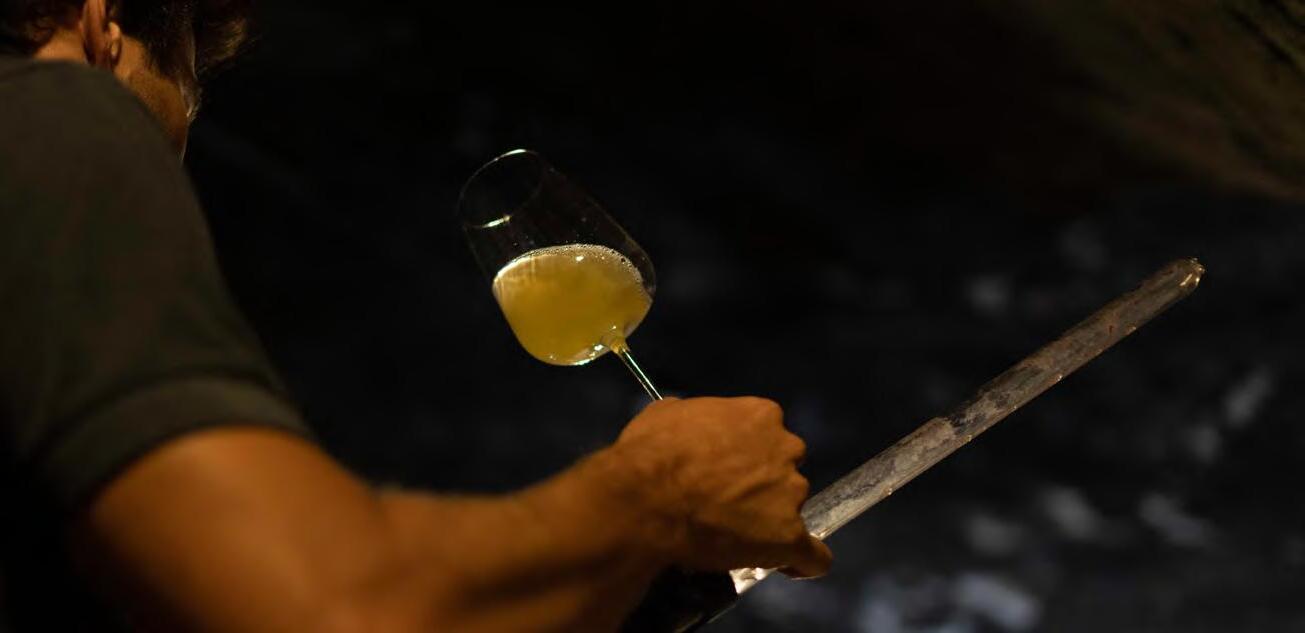
La Parte del Torto
Salsicce, fegatini, viscere alla brace
E fiaccole danzanti, lamelle dondolanti
Sul dorso della chiesa fiammeggiante
Vino, bancarelle, terra arsa e rossa
Terra di sud, terra di sud, terra di confine
Terra di dove finisce la terra
Il Ballo di San Vito
Non si può perder niente se niente in fondo si è mai avuto
Camminante
Questa è la libertà: azione e responsabilità Staffette in bicicletta
Lacrime di cristallo l’hanno bagnata
lacrime e vino versate nel cammino goccia su goccia, perdute nella pioggia goccia su goccia le hanno asciugato il cuor
Con una rosa
Se il senno è sulla luna
Qualcuno l’ha raccolto e lo raduna
Se la ragione è qui che si conserva
Vuol dir che sulla terra
Non è rimasta che follia
Ariosto governatore
Voi complessisti, pacifisti, voi santi ecologisti Noi vi prenderemo anche
More than a bad habit I was talking about bad manners. It is true that violence often arises from a lack of work on emotion management. Education passes through learning and practice, not just through studying. I believe that all the professions in which the torch is passed on, in which it is necessary to listen to each other, from music to agriculture can bring people together. The cultivation of the soil is perhaps the one in which the sense of community crosses generations the most. Therefore the one in which listening is most necessary, starting from the raw material: the soil. "On the western sofa" is a bit our condition of illusory participation in history that comes to us in the form of a continuous solicitation to which we respond in an individual, atomised way. This separation can lead us into a kind of exhausted fatalism. I believe working the soil requires active participation, adherence to a minor story that is done every day, on some occasions even in a communal way.
My knowledge is limited. It would be easy to talk about Josko Gravner, but he is such a character that I can't add anything except a sense of gratitude. I limit myself to pointing out Vasia Čotar in the Slovenian karst, not far from Trieste. His malvazia, vitovska, teran, are all wines you can blindly trust. Wines that have always made
me feel good, that can accompany both solitude and company. And then Francesco Carfagna's ansonaco. His almost wild vineyards on the plunging ridges of the island of Giglio, battling with the wind, salt air and mouflons, are a miracle that ends up in this philosophical and mysterious wine, which gives wind to ideas. But I should also speak of friends, of the gigantic wines of Luigi Tecce from Paternopoli (AV), and of the wine of a young man – Gianluca Cestone, the Pumminale – who is "landless," and makes it by borrowing vineyards abandoned by the elders of the hills of Calitri (AV).
What do you really dislike about the world of wine?
There was that beautiful character played by Antonio Albanese a few years ago, who waved his glass, sniffed it, investigated it and then said: "it's red!" The culture of wine, like any culture, can be made up of ostentation and sectarianism, it can divide rather than unite, and so I don't like that very much.
We are what we eat. You dedicated a song to the alienating experience of the All-you-can-eat menu that's also devouring the permafrost. What does it represent for you?
The all-you-can-eat model seems to me to be a good symbol of the bulimia of induced consumption and of the production model behind it, which is the
one that is devouring the planet, which is literally eating it. The song also refers to the fact that at this moment almost all of our sociality passes through food and beverage. You go out or stay at home basically to eat, as if it were the only thing that matters. Cinemas, bookshops, theatres, newsstands, historic shops are closing, food is rampant, aperitifs, giropizzas, star-studded chefs, celebrity chefs on TV, as if nothing else matters. And then food as a status symbol, ostentation via social media, food porn. In short, if there is no principle or hope... then eat!!! And if that's not what you want, that's all you can.
Feet under the table. When you go to a restaurant what are you looking for; where do you really feel good? Do you have a dish or an aroma that brings back happy memories?
I don't have a general formula, in general I look for familiarity, commonality and a sense of cousinship at every level. I'm not comfortable with models of sterilised spaces, service, plates and crockery. I often go to places that are not in any guide, bringing my own wine, the only thing I really fear. Cuisine, like life, is closely related to places. In every place we have buried our Proustian madeleine, like the dog hides the bone, and it thrills us to find it again.
Wine and music, a powerful combination. What do they have in common?
They are so related that one often begets the other. In fact, among the credits on my records, in addition to collaborators and musicians, the wines drunk should also be listed among the authors. My friend Jacopo Leone did it, indicating Gravner among the art-
«Cinemas, bookshops, theatres, newsstands, historic shops are closing, food is rampant, aperitifs, giropizzas, star-studded chefs, celebrity chefs on TV, as if nothing else matters.»
Mangiati il sistema, mangiati il low cost
Divorati la terra, divora il permafrost
C’è la convenienza, c’è la quantità
Non devi più scegliere, sei la divinità
E se non è tutto quello che vuoi
È tutto quello che puoi
All you can eat
Il mio bene rifugio
La tua fronte macrocefala
Intreccio di vite vinifera
La tua schiena bipartita
La tua vita... la mia vita
Il Bene Rifugio
Attenti al Cannibale
Venti misure di acqua ed una misura di vino
Vino vinocolo
Vino di Mèrone
Vino che abbatte il Ciclope
Vinocolo
Ahi, permette signorina
Sono il re della cantina
Volteggio tutto crocco
Sotto i lumi
Dell’arco di San Rocco
Che cossé l’amor
È stato forse per noia o per mancanza di vino
Siamo usciti di casa e andati incontro al destino
Una giornata senza pretese
ists featured in his wonderful record production "Canzoni perdute" by Marisa Terzi.
Wine can be a living force that ends up in the living experience of recording and playing. At the same time it can reveal to us something that otherwise escapes us. They both speak the language of emotion, they come from intellect and work, but they reveal themselves in emotion.
Why is it not possible to sip real wine during concerts in the country "opentomeraviglia" but we are forced to gulp down, at most, industrial beer?
For ten years we have been organising a festival-party in upper Irpinia, it is called Sponz Fest. Although it takes place in the open countryside, the problem of serving wine in glasses re-
mains unsolvable, which in any case is an important detail for a certain type of wine. It always takes specific areas. Bottles and glasses cannot pass any security checks. Although I believe that everyone is able to look after their own safety and that of others without the need for a ban, this is the rule. The "opentomeraviglia" formula hasn't changed it yet, and some serious accidents have made the rules for regulating access to events and installations ever more stringent, which are often very expensive and even a little alienating. Free music and wine are increasingly to be sought outside organised spaces, in the places and times of gifts.
In closing, a book that has inspired you and that we should urgently read?
I would say anything by Patrick Leigh
Fermor, British traveller and writer, born in 1915, putative father of Bruce Chatwin.
His books on Greece, "Rumelia" and "Mani", are beautiful, but my favourite, starting from the title, is "Time for gifts." The story of his first journey, on foot like mediaeval wayfarers from London to Istanbul in 1933, written many years later, when the knowledge of the world gained in the following 35 years integrates, without scratching them, the enthusiasm and that sense of curiosity which is the chromosome of youth. Despite being a participant in the great dramas of the 1900s, his writing, even opening pages at random, always gives us that sense of gift that every encounter contains, a sense of gratitude to life that also reverberates in the reader.
‒
Lorenzo Ruggeri
If Piemonte wine were a chessboard with Barolo as the king piece, Barbera would undoubtedly be the queen. Not only because it is one of the few Italian wines interpreted as feminine, but also because like the queen it is able to move on this hypothetical chessboard with great ease: only one space forward, in depth, diagonally. And when she moves, whichever square she ends up in, you can rest assured that she won't fail to leave her mark. In the specific case, her representative trait is acidity which makes it immediately recognisable and which allows the single cellar to play with it, according to their own production philosophy, to make it come out at its best. If in the past Barbera was a popular wine, a real peasant food, today it can become a very en-
joyable wine, in line with contemporary taste. And it is on this line that they are moving with more than 400 wineries, members of the protection consortium.
«We want to give a new face to this wine: from popular to pop - explains the President of the Consorzio Barbera d'Asti and Vini del Monferrato, Filippo Mobrici – In this same direction is the new event that has just



ended (Monferrato Wine FestivalMonferrato Identity) which involved Barbera and the other 12 denominations of the Consortium, in the awareness that this set of expressions is also a set of opportunities.» Opportunities that have currently led to exports equalling half of the sales: from more mature markets such as the United States and Canada, to those in great shape in Northern
Visits, tastings at stalls, guided masterclasses and cooking classes: the first edition of the Monferrato Wine Festival – Monferrato Identity, which has just ended (May 20-21), was a real immersion in this rich corner of Piemonte. The final balance can only be positive for an event that has managed to combine the taste of typical Piemontese products with the wines of the Monferrato denominations.
Europe, up to emerging markets, especially Asia. And this is where the "Sustainable Wines from Europe" project comes in, with which the Consortium wants to work on a unitary promotion that involves the image of Monferrato not only for its wine culture, but also for its gastronomic, artistic, historical tradition. How? From incoming on the territory of Asian operators to digital initiatives such as V2B Wine Meetings, which involves a group of consortium companies through online wine tasting with potential new customers. «Building a solid and continuous relationship with Asia is essential to have a progressive growth that involves producers – says Mobrici – A relationship that must be built not only by bringing our excellence directly to those markets, but by hosting Asian buyers and operators in our territories, showing them what is hidden behind a glass of wine: history, culture, traditions, indissoluble roots with the terroir of origin».
On the other hand there is the promotion on the national territory
A Unesco World Heritage Site since 2014, never as in Monferrato is it possible to affirm that the landscape is intrinsically linked to the culture of wine: here, the endless hectares of vineyards, interspersed only by medieval villages and castles, is the expression of a territory characterised by a historical tradition linked to the cultivation of the vine and deeply rooted in the community.
"The recognition by Unesco is certainly an important added value which in recent years has allowed us to bring even more knowledge of our wines to the world" is the comment of the Consorzio Barbera d'Asti and Vini del Monferrato President Filippo Mobrici who likes to remember how this uniqueness is possible only thanks to constant cooperation between man and nature: «It is the fruit of the work of hundreds of years carried out by our men and women who have maintained, but also interpreted according to the times, the winemaking tradition, respecting the history and the landscape».
which alone represents just under 50% of sales. For this reason, on April 17, Gambero Rosso together with the Consortium called together restaurateurs from all over Italy (all present in the Italian Restaurants guide) to get to know this wine so versatile in pairings better. And as a meeting point it could only choose one of the best restaurants in the area, immersed in the nature of Cioccaro di Penango: Enrico Bartolini's Locanda del Sant'Uffizio, where the Barbera references on the menu are certainly not lacking.
The masterclass conducted by the editor of the Vini d'Italia guide Gianni Fabrizio immediately highlighted the characteristics of the vine: high acidity, low tannins and important fruit. On the tasting counter are 13

ambassadors of the denomination with 13 different visions of making wine and a time span that goes from the last vintage on the market, 2022, to 2007. The result could only confirm the extreme versatility of the Docg, which sees the livelier, fresher and more acidic young wines (thanks to the fact that they are not aged in wood) and the more refined, balanced and structured ones. "The acidity of this wine is fundamental and helps us in combinations with the fattest and most important di-
1946 birth of the Consortium
10,430 hectares of vineyards
4,142 hectares claimed by Barbera d'Asti Docg
404 associated wineries

13 denominations protected 65.7 milion bottles total 20 milion bottles of Barbera
d’Asti Docg
shes," the restaurateurs and sommeliers involved observed at the end of the masterclass. "Serving a very young Barbera? Why not? Having a complex nose and a fresh acidity is certainly a nice combination."

Sparkling, aged, in barriques…The many faces of Barbera d'Asti
Piemonte has an enormous fortune: that of counting Barbera among its native grapes, which remains one of the most modern and eclectic cultivars of the entire national winemaking panorama. Without a doubt, Barbera is modern. Genetics gives this wonderful wine grape characteristics such as to make its wines pleasant and understandable even for less expert or simply less demanding or less snobbish drinkers. Furthermore, the Barberas clearly demonstrate undeniable versatility; in the range of a company you can find different types: from the sparkling, to the aged version, with ageing in oak barrels or barriques, passing through the pleasant vintage Barbera, or the young and fresh version. Examining its merits and possible limits, Barbera, cultivated with controlled yields, offers musts with important quantities of anthocyanins, with high, if not very high, sugar concentrations, with acidity always present and with tannins that are never dominant.
Young Barbera d'Asti has an intense ruby colour, sometimes enriched by violet reflections and with a rich palette of fruity aromas which range, depending on the maturity of the grapes, from hints of fresh cherries and wild cherries, up to of fresh plums or in made into jam. The mouth can vary in richness, but its signature is always a fresh and inviting drink.


The wine list itself of the Locanda del Sant'Uffizio speaks above all of Piedmont and the Barbera Docg can only find ample space, as the sommelier Armin Causevic reveals: "They range from the younger vintages to those of 2000, but there is also a few bottles from the 90s. Here we consider Barbera among the top wines: in our tasting menus we serve it after Barolo and Barbaresco, with the most important dishes, such as lamb or squab."

The area that allows the production is within 116 municipalities in the province of Asti and 51 municipalities in the province of Alessandria. Produced for at least 90% with Barbera, it obtained the Doc in 1970 and the Docg in 2008, testifying to a growth path that puts it today as one of the most important Italian wines and with growing acclaim also at an international level.
Barbera d'Asti or Barbera d'Asti Superiore in the aged versions has a chromatic intensity, often less marked than the young wine, but above all it has richer nuances that from deep ruby can slowly turn over the years towards warmer garnet hues. Even the olfactory descriptors change considerably: the initial exuberance of the fruit gives way to a more multifaceted whole where balsamic aromas find their place (officinal herbs, mint and licorice, but also distant memories of incense) and more complex fruity notes (cherry in alcohol). Then all the hints deriving from the wood also take over (sweet spices such as vanilla or nutmeg) which over time in the bottle can recall chocolate and toasted coffee. On the palate the initial fiery aspect gradually fades to become softer and more calm, where the tannins, never intrusive, harmonise giving soft and enveloping sensations with excellent body.





In particular, the lunch in the lemon shelter of the Locanda del Sant'Uffizio proposed by the resident chef Gabriele Boffa gave all those present the opportunity to put together some traditional Piemonte dishes with 47 labels of Barbera Docg: vintages, areas and characteristics, even very different from each other that stimulated everyone present to find the most balanced combinations but also the most daring ones. At the opening, various welcome appetisers (quail egg, Bra sausage, crispy chicken breast) and then move on to the Piemontese fassona tartare with hazelnut sauce and cod with black truffle, lemon and anchovies. The latter recipe has somehow entered the Piemontese tradition since a Norwegian community settled in Agliano Terme (Asti), bringing its culinary traditions to the heart of Monferrato. The Barbera Fish Festival was also born from the happy twinning between the two cultures which, every two years, takes place in October in Agliano Terme.
After this foray into the flavours of the Lofoten Islands, a dish born and raised in Piemonte could not be missing from the Bartolini menu: Agnolotti del
plin. As main dish, the choice instead fell on rabbit, with carrots and foie gras. The sweet finish was entrusted to a dessert of pear, Barbera and zabaglione. An immersion in the territory that has highlighted even more the great versatility of this wine and its still important potential.
 Consorzio Barbera d’Asti e Vini del Monferrato Costigliole d’Asti (AT) – piazza Vittorio Emanuele II, 10 0141324368 – viniastimonferrato.it
Consorzio Barbera d’Asti e Vini del Monferrato Costigliole d’Asti (AT) – piazza Vittorio Emanuele II, 10 0141324368 – viniastimonferrato.it
International taste, Calabrian soul.



From Franciacorta to the Castelli di Jesi: distant territories, but the journey is short. Thus Barone Pizzini invested planning, emotions, money and energy in the Pievalta winery, managing to bring out a masterpiece from an area that is already a masterpiece in itself, rich in landscapes, art and biodiversity. Castelli di Jesi Verdicchio San Paolo '19 was awarded as White of the Year in Vini d'Italia 2023: we tried it in a vertical that starts from the first harvest, 2004
 words by Gianni Fabrizio – photos by Francesco Vignali
words by Gianni Fabrizio – photos by Francesco Vignali
It’s a bit like a novel, this story of the small Pievalta (34 hectares of vineyards), born out of the stubbornness of a man who wanted to compete with a great native white Italian grape: a story that has a twist on every page and which keeps us glued to the end. Today the wine celebrates the White of the Year award with a Castelli di Jesi Verdicchio San Paolo '19 (from the municipality of the same name where the 5.3 hectares of vineyards are located and from which 13,000 bottles are born every year): a celebration honoured with a vertical starting from 2004, the first harvest, and which has also conquered international acclaim for the extraordinary evolutionary capacity of the vintages of this wine.
It is as if Silvano Brescianini, one of the most important producers of Franciacorta from Brescia, had always known that on those gentle and pastel-coloured hills, where the fields of sunflowers give a show between one vineyard and another, the wine is made really well. An attractive landscape and from which Pievalta takes both its name and image in an attempt to convey that beauty and sensations sung in Giacomo Leopardi's Infinito.
Brescianini's bond with the Castelli di Jesi hills is deep, almost visceral: «I often tell my wife that one day we might even come and live here.» And he adds: «There is a crazy and unexpressed

heritage here. They will be trendy places soon. The Castles, here, truly exist in this magical land that gives birth to a grape that yields harmonious, elegant, powerful and undoubtedly fascinating wine. There is a culture of food and hospitality. We have always believed in the potential of this area and this grape, one of the most important natives of Italy, and we have continued to invest in the excellence of Cupramontana and Montecarotto. Twenty years later I say that we were right to focus on Verdicchio and on these hills, even if I admit that it was not easy.»
At the beginning, in particular, the difficulty was the need to change the
status quo. «The vineyards suffered a lot, they turned yellow, they lived on soil as hard as concrete. When we bought them you couldn't see them, because the soil was covered with chemical fertilizer. We had to change everything by facing an agronomic culture caged by "it's always been done this way." At the same time, however, we too had to learn and understand a territory that was different from ours, an autochthonous grape that behaved in a different way in the vineyard and in the cellar compared to others to which we were more accustomed. We experimented and had patience; we ensured that the plants had time to get used to going on their own. Then, of course, little by little the style of our wines changed: harvest after harvest we became increas -
ingly attached to the vineyard which today is about thirty years old, with truer, more authentic wines. At one point this wine even seemed different from that of the other vineyards: it was precisely because it was the most authentic Verdicchio,» recalls Brescianini.

lIt was logical that in Pievalta the culture of sustainability and organic farming appeared right away: the matrix came from Barone Pizzini, a cellar that for 25 years in Franciacorta was a pioneer of these agronomic practices. But organic farming was not enough, so we went further: «The choice of biodynamics turned out to be the right one, be-
Perlugo is, in name and in fact, the "President's" wine: since the 2009 harvest, thanks to the great experience of Barone Pizzini in the production of Franciacorta, Pievalta also offers a version of Verdicchio Classic Method Dosage Zero with excellent personality, with notes of aromatic herbs, helichrysum and almond husk, produced in 12,000 bottles and which is now enjoying increasing success. It bears the name and is dedicated to Ugo Colombo, President of Barone Pizzini, who strongly believed in Pievalta and also desired a classic Marche method that would act as a trait d'union between the two territories. «You need great delicacy and the utmost attention in pressing the grapes to avoid extracting the bitter notes that arise from polyphenols – explains Brescianini – The wine remains on the lees for at least 16 months after ageing in stainless steel for about another 6 months.» It is a version of Verdicchio which boasts an excellent drinkability and which goes well with fish dishes and non-aged cheeses, but also ideal as an aperitif.
cause it gave us an identity. Simplifying, biodynamics aims at the health of the soil and the plant. The roots connect with the mineral part of the soil and bring it back to the bunch. For this reason the taste of the wine depends on the place where the vine grows. We produce 150,000 bottles: we are small, but biodynamics has helped us position the wine, precisely because we were not from the area,» says Alessandro Fenino, a Milanese winemaker who has been Silvano Brescianini's right hand since day one here, in the land of Verdicchio
THE PIEVALTA MICROCOSM
«Here it's all clay, the roots find it more difficult to survive, especially in tougher years. The father of biodynamics, Austrian philosopher Steiner, said that the farm is a living organism: to function well it must be able to do everything by itself. Exactly the opposite of modern agriculture, which is very fragmented. But this is the most sustainable system, a complete farm that has orchards, grows grains, has arable land, like sharecropping, has absolute biodiversity and is obviously self-sustaining. It has animals and therefore also manure. We therefore use pomace to produce our compost which we can use in some parts of the vineyard,» says Fenino, while recalling that «in 2005 we began to apply biodynamic practices and, little by little, the vineyard was reborn. And it just kept getting better from there. In 2007 there was a very hot year and it was the first test, it made us understand that the new way of working actually worked, because the vines were doing well. The wines were getting better and that second part of the mouth was slowly starting to come out.»
The path is slow, but inexorable: with the 2009 harvest came the Quality/ Price award and with the year 2010 the first Tre Bicchieri to the wine
2003 – The Project expands with another 5.5 hectares of vineyards on Monte Follonica in San Paolo di Jesi
2002 – Barone Pizzini focuses on Verdicchio dei Castelli di Jesi: buys the first 24 hectares in Maiolati Spontini. Alessandro Fenino, an oenologist with a few harvests in Franciacorta behind him, was entrusted with the direction of the project, supported by agronomist Pierluigi Donna. Organic management begins

2007 – The first classic method from Verdicchio grapes is born: Perlugo
2004 – Experimentation of ancestral vinification in amphorae that will develop into the Curina, Verdicchio Castelli di Jesi passito
2005 – The biodynamic management of all the Pievalta vineyards begins
2008 – Pievalta is the first wine company in the Marche region to obtain the Demeter biodynamic certification. Silvia Loschi, Fenino's colleague in Barone Pizzini, moved to the Marche region to share life and work with Alessandro
2018 – New vineyards are acquired in Montecarotto. Pievalta is the first winery in the Marche region to be accepted by the association of biodynamic companies (there are, among others, Domaine de la Romanée Conti, and the international Biodyvin group). Large barrel and cement tanks are introduced for the vinification and ageing of the San Paolo and Dominè wines
2012 – First harvest from Montepulciano grapes with the Campo del Noce label
2013 – Il Verdicchio dei Castelli di Jesi
2011 ottiene l’Oscar Qualità/Prezzo
2011 – Verdicchio dei Castelli di Jesi '09 obtains the Award for the Best Quality/ Price Ratio according to Vini d’Italia 2011 by Gambero
nella guida Berebene del Gambero Rosso

2014 – The Castello di Jesi wine
2021 – Verdicchio dei Castelli di Jesi Cl. Sup. Tre Ripe '09 obtained the National Quality/ Price Award for Berebene by Gambero Rosso. New vineyards in Montecarotto are planted from mass selection
2019 – New vineyards are planted from mass selection on Monte Follonica di Cupramontana. The vinification of Dominè changes: now it macerates on the skins for 7 days
Verdicchio Cl. San Paolo Res. '10 wins Tre Bicchieri in Vini d’Italia 2014 by Gambero
2020 – The renovation of the historic farmhouse ends with the inauguration of the guesthouse
2022 – Verdicchio dei Castelli di Jesi Cl. Superiore Dominé 2019 for the first time obtains Tre Bicchieri in Vini d’Italia 2022 by Gambero Rosso 2023 – Il Castelli di Jesi Verdicchio Cl. San Paolo Ris. ’19 is White of the Year



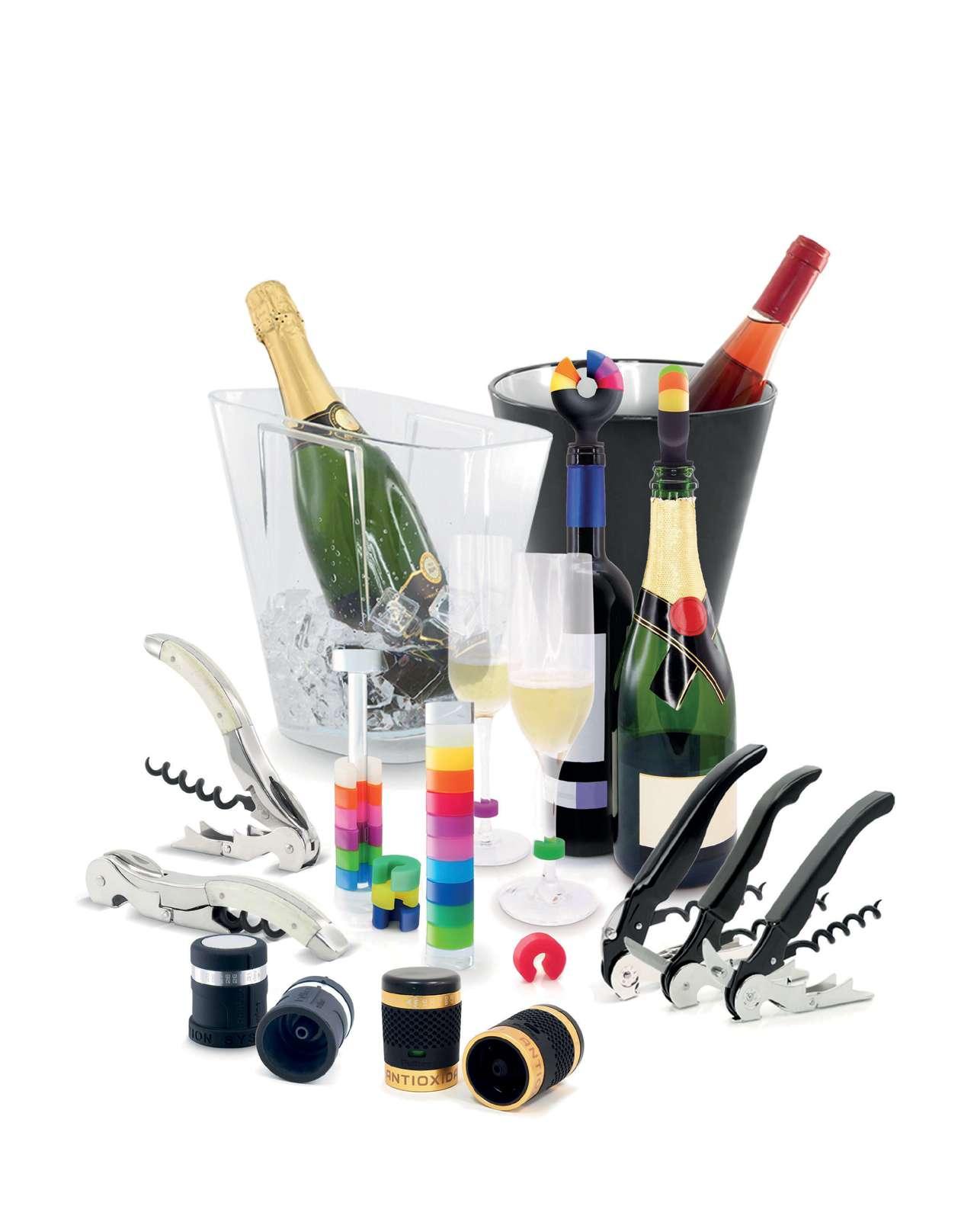
made with grapes from the San Paolo vineyard alone on the north-east side, which therefore looks towards the Adriatic Sea, towards Monte Follonica where the soil is sandstone even if with a non-negligible presence of limestone. The crescendo was unstoppable and constant: experimentation has led, since 2019, to embrace concrete tanks and large wood barrels for vinification and subsequent ageing. This is the authentic closing of the circle towards absolute quality in the rigour of sober elegance that evolves over time, becoming a classic in a modern key: like those novels that we can continually reread, never tiring of them, always catching different nuances that seemed to not exist before.

This Riserva San Paolo del Castelli di Jesi Classico was born on silica-limestone sandstone soils alternating with more or less clayey marl from Monte Follonica. On the slope of San Paolo di Jesi at an altitude of about 350 metres there are more than 6 hectares of vineyards, divided into two distinct parcels: San Paolo Vecchie Vigne, planted with almost 3.5 hectares from 1992 and San Paolo Bosco of about 2 hectares planted in 2009. In good years these vineyards produce an average of 13,000 bottles. In total coherence with the viticultural part, also in the cellar no adjuvants of animal origin are used and therefore the wines can boast the wording "vegan". The wine is aged for 19 months in very different containers (stainless steel, concrete and 25 hectoliter barrels).
2019 The wine wears a deep straw-coloured dress but retains beautiful bright, particularly lively reflections. The nose is intense and already quite complex with aromas of almonds and dried flowers resting on a balsamic/ mineral base of undoubted finesse. On the palate, structure and acidity are the prelude to a long and enveloping finish, although still very young..
2016 This vintage does not hide the great freshness of the harvest; from sight to taste, passing through smell, all the clues point in the same direction. To the eye the reflections are still largely greenish, while to the nose the aromas of mint and anise refresh the whole. Compared to 2019, the mouth appears more vertical, thanks to the lively acidity and tantalising sapidity. Long and well-bodied, it will go far.
2015 The result of a hot harvest, it is presented in shades that go towards gold, but retains good liveliness. The nose combines notes of dried herbs and hints of ripe fruit with a background that has not yet lost its slightly metallic character. However, the mouth and nose, even if not particularly intense and vibrant, have developed qualities of harmony and balance.
2013 It appears less linear and with a more intense golden colour than the previous ones and an olfactory phase with a strong personality, with aromas of marked complexity (dried herbs, honey and grains). On the contrary, however, the palate does not show any heaviness, with an unexpected acidity, enriched by beautiful structure and enviable persistence: a severe white, but full of class and with a strong character.
2010 The bright straw-coloured dress, practically without any evolution, is extremely youthful. The nose unwilling to indulge quickly accentuates this idea of freshness, thanks to the hints of anise and almond and the distant memories of fern; it has finesse and complexity to spare. It enters the dense and complete palate with a champion savoury / acidic structure that closes beautifully with a long mineral finish.

2009 Intense and golden, at first glance it betrays a prolonged hot summer season which gives this vintage a comfortable opulence. The nose is immediate and slightly baroque with its hints of dried flowers and ripe yellow fruit, but also due to light spicy hints. The berry is rich and even explosive and fatty but rebalanced by an inviting sapidity.
2008 At almost fifteen years of age, this Verdicchio represents tangible proof of how much this grape must be entered among the great ones on the world scene for its ability to age, by combining richness and balance. Multifaceted aromas of dried fruit open up, which immediately give way to notes of ginger and anise of great finesse, while on the palate power, richness and sapidity give strength and persistence to the final phase.
SAN PAOLO 2006
The light gold robe still appears very fresh and full of life, as does the nose which focuses more on character and complexity, knowing full well that the aromas of soy and glutamate partially limit its finesse. The palate does not offer the statuesque body of other vintages, but appears in a moment of great harmony and pleasant drinkability which are enhanced by a slight bitter sensation.
From the left: Francesco D'Agostino, Lorenzo Ruggeri, Alain Kunz, Gianni Fabrizio, Marco Sabellico, Ricardo Castilho, Michaela Morris, Lynn Zhou, Michal Šetka, Bonnie Reinwald, Stefano Donarini, Alessandro Fenino, Simone FM Spinner and Giuseppe Carrus

Pievalta
Maiolati Spontini (AN) via Monteschiavo, 18 0731 705199
pievalta.it




Le Fontanelle offers a 360-degree gastronomic and hospitality experience. Four generations have managed the 20 hectares of the property, 4 of which are mountain pastures. The business is now specialised in the production (and transformation in the corporate Osteria) of wild and semi-wild beef, lamb and pork. The cured meats are processed in the internal laboratory without any additives and preservatives.
A day entirely dedicated to manufacturers of Italian food and wine excellence: “Top Italian food & wine,” last December 18 at the La Nuvola congress centre in Eur, hosted the presentation of the guides Top Italian food, Grandi Salumi and Berebene. Against this backdrop, in collaboration with Lazio Innova (a company under the Lazio Region body), the masterclass “The best of Lazio: Comparing Great Wines and Great Cured Meats” dedicated to the national and international sector press had the aim of introducing a selection of products of excellence in the field of cured meats and wine. The companies present, all from Lazio, were chosen from among those awarded with the highest score: Tre Fette in the Grandi Salumi guide and Tre Bicchieri in the Vini d’Italia 2023 guide. Two Gambero Rosso experts presented the products: Mara Nocilla, curator of the guide Grandi Salumi, and William Pregentelli, among the editors of the Vini d’Italia and Berebene guides. In the Lazio Region there is one of the most important agro-industrial systems in Italy which represents 3% of the wealth of the entire regional economy and contributes, with 6.3 billion in annual turnover, to 6% of national agri-food production. The strengths of the Lazio agri-food industry are manifold: a wide range of top quality products, a strong link with the territory and its traditions, a marked propensity for innovation, and high safety standards. A sector that has 3,500 companies in the region with 20,000 employees, 63 high-quality brands (Dop, Igt, Igp, Doc and Docg) and 600 million euros in exports. Agriculture and agro-industry constitute an optimal ground for the integration of advanced technological contents deriving from numerous enabling sectors, such as aerospace, ICT, nanotechnologies, new materials and biotechnologies, thus arriving at the realisation of highly innovative solutions in areas such as precision agriculture and vegetable production in harsh environments.
The prosciutto (Excellence) of Le Fontanelle was paired with Anthium Bellone ‘21 of Casale del Giglio (in Aprilia), a grape grown ungrafted in the Anzio area and which in 2023 won Tre Bicchieri for the third time in a row.
The Mattei family has been in the world of artisanal meats and cured meats for 35 years. Since the year 2000, the butcher shop has been curing Caserta pork, an autochthonous pig breed typical of lower Lazio, Campania and Molise. From these noble meats comes a fine line of cured meats and the famous Monte San Biagio sausage (PAT denomination), symbol of the territory, flavoured with coriander seeds. The project is to build an ad hoc farm in the province of Latina to further improve the quality of these pork specialties. Their Prosciutto Stagionato di suino razza casertana (Tre Fette) was also paired with Anthium Bellone ‘21 from Casale del Giglio
3 LAURETTI – Amaseno (FR)
At the end of the 19th century Biagio Lauretti created what today represents a solid family business, specialised in breeding cows and pigs for meat, and for some years now also dedicated to water buffalo. The company produces water buffalo, Chianina, Marche and black pork meats and cured meats, as well as mozzarella and other cheeses. Their Pancetta stagionata di maiale pesante (tre Fette) was paired with Donna Adriana ‘20 from the Castel de Paolis winery in Grottaferrata (Rome): a blend of viognier and malvasia del Lazio.
4

The Avaglianos’ adventure in meat began over a century ago in the cattle trade in Cava de’ Tirreni (Salerno province). Then the butcher shop was born in the centre of Sabaudia and, more recently, the adjoining sausage factory, managed by Vincenzo, the fourth generation, together with his children Manuele and Francesca. A few years ago the circle closed with the birth of a farm of “black Circeo” pigs. Their Guanciale di suino Nero del Circeo (Tre Fette) was paired with Donna Adriana ‘20 by Castel de Paolis
5 MAMMA GIOVANNA
Gallinaro (FR)
Butcher shop, sausage production, steakhouse and agricultural cooperative since 1950 in the Val di Comino. The arrival point of a journey started by Celestino Morga who in the first half of the 1900s opened a shop for the sale of meat and the production of cured meats. Today the business is managed by the third generation (Federica and Alessandro). Since 2019 the company has been an agricultural cooperative. Their Salsiccia di Suino Nero (Tre Fette) was paired with the elegant Fiorano Bianco ‘20 of the Roman winery Tenuta di Fiorano
6
Started in 1953 by Scherzerino La Rocca, it changed pace in the 90s with the third generation: Rino transformed it into a company specialised in quality cured meats, without preservatives and an innovative reinterpretation of tradition. Think coriander salami from Itri. Their Salamino al Coriandolo (Tre Fette), was paired with Ars Magna Viognier ‘20 by the Ômina Romana winery in Velletri: the first Tre Bicchieri for this beautiful and interesting reality.uesta bella e interessante realtà.
7
Peasant origins and Ciociaria traditions intertwine with the selection and transformation of the meats. Leading this sausage manufacturing reality is the Carne&Carni Cooperative led by the same family that started the business in 1912. The cured meats are produced in artisanal fashion, some from black pigs from the Lepini Mountains. The flagship product is Zazzicchia, an ancient Ciociaria cured meat that Marco Pellegrini makes following an old family recipe. His Porchetta (Tre Fette) was also paired with Donna Adriana ‘20 by Castel de Paolis
8 COCCIA SESTO – Viterbo
Nonno Nazzareno was a pork butcher in Preci near Norcia, in the early 1900s. His son Sesto followed him and during WWII he moved to Viterbo where he opend his sausage production. In 1978 the new factory was born. One of the flagship products is the Susianella di Viterbo, a Renaissance sausage made with pork corata and protected by a Slow Food Presidium. The Susianella (The Fette and Best Offal Salami Award) was paired with Baccarossa ‘20 by Poggio Le Volpi, Nero Buono in purity.


Young, talented and very busy. Voilà the entrepreneurial chefs who have decided to invest in the Castelli Romani, i.e. 1 7 municipalities a few kilometres from Rome today in the midst of a gastronomic renaissance. Here are their stories and those of their colleagues who - because of the great classic season of the Castelli area - have given a new face to food and wine at the gates of the Eternal City
words by Antonella De Santis - infographics by Alessandro NaldiThey are young, sometimes very young, prepared, and enterprising. Entrepreneur chefs, creators of a gastronomic renaissance that - starting from the beginning of the 1920s - affected the Castelli Romani, i.e. 17 villages in the south-eastern area of the Italian capital boasting a long history and well-rooted food and wine traditions. Places of great charm and ancient beauty, today these have returned to claim a leading role in the local gourmet coordinates (which would benefit from an expansion of the railway service, including at night). Credit for this "rediscovery" goes to a handful of young chefs who have had the courage (and perhaps even a little recklessness) to invest in an area often suffocated by battle-hardened tourist restaurants.
Not an easy dining scene, the Castelli Romani, traditionally linked to a cuisine with a classic, comforting, stainless imprint, but also home to a hit and run food proposal, made up of fraschette and osterias – the kind where folks arrive with a bundle of food to accompany the local wine, often the venue's own production – informal places but with a glorious history often betrayed by opaque and poor quality interpretations. Little research, almost no innovation.
Then at one point came three guys from Sintesi, if not the first in order of time, certainly the most relevant in terms of impact, launching a new Castelli wave. The ages of Sara Scarsella, Matteo Compagnucci (in the kitchen) and Carla Scarsella (in the dining room) don't even add up to 90 at their debut,
on March 1, 2020, a breath away from the pandemic. Working partners with a mind-boggling pedigree: Noma, Geranium, and then in Australia by Neil Perry and Josh Niland, the chef who spread the word (already frequented by someone, for goodness sake) of the dry ageing of fish (see the report on the Gambero Rosso issue n.355 August 2021) present on the menu since the onset.

But then something else arrived, with a story that couldn't be more contemporary, of seasons and territory: fermentations at the service of ingredients, marinades seeking textures and novel nuances, embers to give depth with calibrated smoking techniques. Aiming to remove, with meticulous attention,

In the opening, the vineyards close to the famous "Ponte dell'Ariccia" as the monumental nineteenth-century viaduct is called in the Castelli town (photo by Francesco Vignali)



We wanted to present the renaissance of the Castelli area, but we cannot ignore those who arrived first or those who gave a turning point to the family business: they too, and perhaps first of all, have contributed to making the Castelli Romani name great and also to pull the sprint to the new course. Among these "veterans," is certainly Alessandro Bucciarelli with his Cantina Bucciarelli in Frascati: at the beginning it was a typical fraschetta, then it evolved into a trattoria with an outdoor space and a stunning view (a feature shared, moreover, by many of the local restaurants). With the latest generation, the proposal, although always linked to tradition, moves towards an osteria style with an entirely contemporary twist that looks to ingredients, workmanship, and rigour in the choices; all with a view to full enjoyment. Think oxtail meatballs or baked lamb testarelle, as perfect proof of this. The wine list follows the mood: small artisan producers, unconventional labels, in every sense.
Running closely is also Hosteria Amedeo in Monte Porzio Catone, another fraschetta surrounded by greenery born in the 60s and that became a trattoria about twenty years later, and then passed down from generation to generation until today. Unwavering is also Il Torchio di Frascati, of Lorenzo Buonomini (from the same extended family of one of the most famous caterers in Rome: Magnolia), which for about ten years has been offering a never banal local cuisine, capable of escaping from the obligations of the traditional repertoire also thanks to a true idea of market-strong cuisine: mixed salads, tenerumi (squash leaves), wild herbs. This is an area of vineyards and fields: it delivers treasures to those who want to seize them. In the rustic stone spaces you can find slow-cooked and then grilled beef tongue with seasonal pickled vegetables, cacio e pepe with artichokes and mint, gricia with figs and other variations on the theme to accompany a wine list that equally makes authenticity its mantra. In Albano, in the former barn of an ancient convent of the Poor Clares, there is Galleria di Sopra by the Carfagna brothers, pioneers in the Castelli area. And not only for the white tablecloth approach and care of the mise en place, but also for their contemporary, original cuisine, with modern techniques at the service of quality ingredients. Over time we have seen things like chopped red snapper with basil sorbet, raspberry extract and mesclun salad, or prawns and rum, broccoli and tangerine, or stewed hare with Roman broccoli and currants. Permanent praesidium, for more than 100 years, is the restaurant-hotel of the Cacciani family (in the photo) which from the historic terrace offers an enchanting and unexpected view of Rome. We leave the final word to Paolo Cacciani: «The reality of the Castelli Romani lies in a very strong evolution: if 10 years ago I had to share 20 good addresses, it would have been much more difficult. But now it's different: there are many young people who have given vent to hope, decided to invest, and are also creating hybrid formats that I really like.»
but also to bring together cultures and suggestions on the basis of what small producers and attentive artisans of taste make available, to support a pantry that relies on its own vegetable garden. Here then are dishes such as bean cream, lard, trout roe and burnt hay; or rabbit stuffed with creamed capitone, koji and lemon sauce. Even the wine cellar has taken shape, between the coordinates of the natural without flooding in funky wines of exploded vinegary traits. They weren't the first – we said – but they were the ones capable, more than others, of turning the spotlight on the area, even more after the feedback of critics: firstly Gambero Rosso, which awarded them among the new entries of the year in the Rome guide, then Michelin, which has more recently awarded them with a star. However, the three did all of this
by moving cautiously, on tiptoe: «The kitchen has changed since we opened –explains Matteo – But at the beginning it was lighter, in order to bring customers closer without frightening them; now we have arrived at what we wanted to do from the beginning.»


The same reasonable caution of Luca Ludovici, who – just over 8 months after the opening of ConTatto in Frascati together with Lorena Cavanna –began to introduce some more sophisticated dishes, «even if I've never domesticated my cooking,» explains the chef with experience matured with Gualtiero Marchesi, Massimiliano Alajmo and Michel Roux. He proceeded gradually, as the clientele became loyal and the place started to work with a certain
ease. «I have many clients from the area – he says – Frascati, Monte Porzio Catone, Grottaferrata. Many arrive through word of mouth, which is a little slower, but brings an already selected clientele, who knows what to expect.»
The reaction of local customers is one of the key points. Being in a small town has ITS pros and cons: «The rent here is lower – pragmatically affirms Jacopo Ricci of DLR in Frascati, one of the Genovese Boys that opened in 2021 (see Gambero Rosso issue n.343 August 2020) – The province allows you at least to survive. » However, we need to overcome distrust and perplexity, especially if you don't know the area and don't enjoy a consolidated network of relationships, the ones
La denominazione Alto Adige DOC è relativa a un piccolo territorio dove convivono elementi diversi che, in questa terra, riescono ad accordarsi in un’unica armonia. Vigneti baciati dal sole mediterraneo e cresciuti nel territorio alpino; tradizionale raccolta a mano e vinificazione operata da vignaioli esperti e apprezzati in tutto il mondo. Tutto questo sono i vini Alto Adige DOC.
www.vinialtoadige.com

Albano Laziale
DeCORE Gelato creativo corso G. Matteotti, 37 06 97847627 – decoregelatocreativo.com
La Galleria di sopra via Leonardo Murialdo, 9 06 9322791 – lagalleriadisopra.it
Sintesi viale dei Castani, 17 06 45557597 – ristorantesintesi.it
La Belle Epoque Cocktail Bar via Borgo San Rocco, 21 06 87726589 – fLabelleEpoquefrascati
Cacciani via Armando Diaz, 13 – 06 9420378 –cacciani.it
Cantina Bucciarelli via Regina Margherita, 27 06 94010871 – fCantina-Bucciarelli
ConTatto via Gioberti, 11 – 06 21700957 –contattoristorante.it
DLR via Nino Bixio, 1 – 06 630640 dlr-dopolavororicreativo.business.site
Greed Avidi di Gelato via Cernaia, 28 347 6236679 – fgreedavididigelato
Primo a Frascati via Vardesca, 1/A – 333 4525653 –enotecaprimo.it
Il Torchio via Goffredo Mameli, 3 06 9425520 – torchioristorante.com
Altro Cucina e Cocktail piazza Giuseppe Mazzini, 1 – 06 86215988 ristorantealtrogrottaferrata.it
Bottega Selezione Boccoli enoteca piazza G. Bruno, 20 06 89524333 – selezioneboccoli.com
Nando in pizzeria via Roma, 4 – 06 9459989 –fnandoinpizzeria
Pomme pasticceria creativa corso del Popolo, 55 06 86928789 – fpommepasticceria
Tatino Lab gelateria naturale via Domenichino, 15 – 06 97245110 –fTatino-Lab
Portale 21 Opificio di cucina via Rodolfo Morandi, 32 06 94837668 – portale21.com
Monte Porzio Catone
Epos Bistrot a Poggio Le Volpi
Selvotta
Frascati
La Belle Epoque Cocktail Bar
Cacciani
Cantina Bucciarelli
ConTatto DLR
Greed Avidi di Gelato
Primo a Frascati Il Torchio
Valle Marciana
San Marco
Armetta
Monte Porzio Catone
Colonna Stazione
Monte Porzio Catone
Epos Bistrot a Poggio Le Volpi Hosteria Amedeo
Molara
Grottaferrata
Altro Cucina e Cocktail
Marino
Marino
Portale 21 Opificio di cucina
Santo Spirito
Bottega Selezione Boccoli enoteca Nando in pizzeria
Pomme pasticceria creativa
Tatino Lab gelateria naturale
Castel Gandolfo
Albano Laziale
DeCORE Gelato creativo
La Galleria di sopra
Ariccia
Sintesi
Nemi
Rufelli
«Daje de Castelli is a kind of anonymous collective», says Jacopo Ricci, amused. It is a group in which some realities converge that share ideas, problems, advice and producers; evenings are organised around the dinner table or in the kitchen, planning meals with many hands. Open to everyone? Not really: «We are only looking for kindred spirits, if you propose the territory but you do it wrongly it's useless.» Selection is the keyword: products, producers, travel companions. A tangible sign of this networking is a wine produced by Cantina Ribelà and La Toretta Bio di Riccardo Magno which can be tasted at DLR, Primo and Torchio.
Jacopo has instead who was born and raised here, and returned here. For him there has been great attention since the opening, as for Valentina Pacifici , born in '96 (Niko Romito school, experiences with Gianfranco Pascucci and Alba Esteve Ruiz as well as from Pianostrada also in Rome), who in May 2021 opened Portale 21 Opificio di Cucina in Marino: the fight against Covid dictated closures at 10 in the evening. «I had to invent a formula to be able to open at that moment.» Tapas, convivial appetisers at the centre of the table, cocktails and wines. It worked: «People were intrigued by the place, so different in style from those here, and also in the type of proposal. Now we have regular customers, not just from Castelli, who appreciate our choice.» Which places them in a medium-high price range, between 7/10 euros for tapas and 18/25 for main courses.
«We are seen as an expensive restaurant – replies Luca Ludovici of Contatto (5-course tasting menu for 55 euros and 7-course sold at 75 euros) – Colleagues tell us that we are too low, but by being careful with the food cost I can manage.» Once the initial hurdle is overcome, people are convinced: «They realise that they have spent two hours or more here.» The lion's share of the proposals are those that focus on products of his "cave" transformed into an ageing and fermentation laboratory: cheese, bread, vinegar, chocolate, rice – «I use Riso Buono which absorbs all the scents. I do it with Fiuggi water and parmigiano rinds, so as to restore good calcium to the water with which I cook the rice. I mix the rice with the fatty part, which separates on the surface.» – And also mushrooms: «The roast cardoncelli mushrooms with eggs and beer is very popular.» The cave offers results that are still partially


Not just restaurants: in the Castelli Romani there is a new wave of quality shops, master craftsmen such as Dario Rossi of Greed Avidi di Gelato, a gelato maker awarded with the Tre Coni by the Gambero Rosso Gelaterie d'Italia guide, a guarantee of quality, by now for several years and which today also has a branch in Rome (Circonvallazione Gianicolense, 276). Also in the sweet sector there are deCORE Gelato Creative in Albano Laziale and Tatino in Grottaferrata, where there is also Pomme, a good contemporary pastry shop. Luca Boccoli's workshop has not yet completed a year of life, bringing his Selezione to Grottaferrata: just 20 square metres filled with Burgundy, Champagne but also wines from Lazio, those of the nouvelle vague (see Gambero Rosso issue n. 346 November 2020) a very personal wine shop in which to find the selection of the selection, things that are alive, sought after, beloved.


undiscovered, the next step will be an underground vegetable garden that exploits the humidity of that very cave – «for everything that does not need photosynthesis,» he adds – an offer integrated with other products, above all from area, such as Patrizia and Toni's vegetables from the nearby market.
There is still a lot of work to be done on marketing and communication. This is also confirmed by Jacopo Ricci, who in his restaurant DLR proposes a cuisine of great immediacy and equally rigour: «We said right away that they were doing something completely different. A lot of storytelling is needed, explaining why everything is done this way; because it costs what it costs and because maybe at some point it ends. There is no cheat-
 5. Valentina Pacifici, chef of Portale 21 Opificio di Cucina
6. A Portale 21 Opificio di Cucina dish: homemade green tortelli, smoked pumpkin and caciocavallo cheese fondue
7. Gelato cone of deCORE Creative Gelato
8. Antonio Scarfone in the deCORE gelateria in Albano
9. Lorenzo Colaiacomo, barman of Altro Cucina e Cocktail in Grottaferrata (photo by Francesco Franzese)
5. Valentina Pacifici, chef of Portale 21 Opificio di Cucina
6. A Portale 21 Opificio di Cucina dish: homemade green tortelli, smoked pumpkin and caciocavallo cheese fondue
7. Gelato cone of deCORE Creative Gelato
8. Antonio Scarfone in the deCORE gelateria in Albano
9. Lorenzo Colaiacomo, barman of Altro Cucina e Cocktail in Grottaferrata (photo by Francesco Franzese)
ing and this pushes us so much.» Ricci's is a gastronomic orthodoxy that passes through the selection of products and producers, of radical imprints that distance themselves from clichés and moral obligations, even those towards traditional dishes. They are here only by free choice. The rest is entrails, poultry, lake fish, and popular vegetables. And Jacopo, this being "Fedeli alla Linea" (to quote one of his own beloved quotes) loudly proclaims it, starting with the wine list. Natural, of course. A challenge. «Frascati is a different scene from Rome, perhaps it is not quite ready for natural wine, it was a somewhat risky choice» – says Matteo Palombi of Primo in Frascati. But then his courage was rewarded: «There has been a good response from customers: the research we have done and we do is appreciated, and guests often come back asking what they
tried the previous time.» Opened in August 2021, Primo is a wine bar with a mix of mainly natural wines (if not the only, close, for now, in the area) pouring wine by the glass, serving tapas and accompanying dishes: cheese platters, beef tartare, bread, butter & anchovies, oysters in the summer. While in the cellar the selection is constantly changing: «We have 170 labels, we try to expand the offer focusing on local producers, but then there is a bit of everything on the menu: Slovenia, France, New Zealand, and there are also some classic cocktails.»
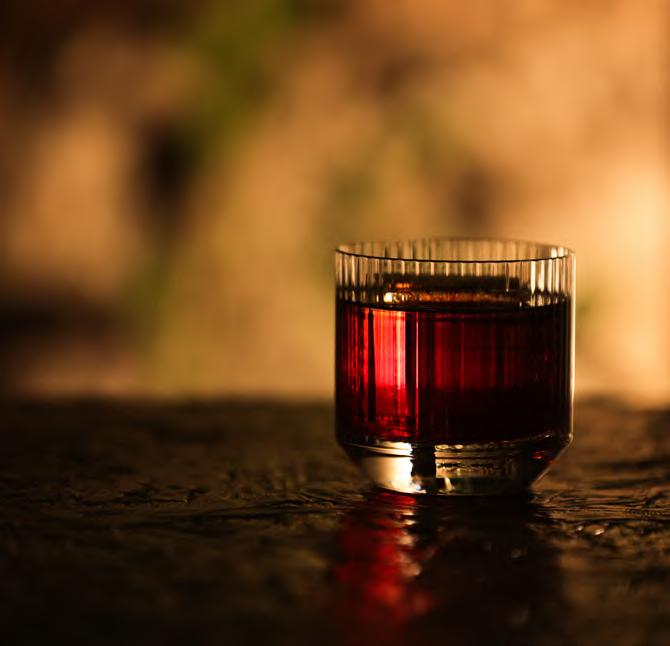
On the cocktail front there is La Belle Epoque Cocktail Bar in Frascati by Giorgio Colonna and Manuel Boncompagni: pupils at the Jerry Thomas school, great ties with the world of
international bartending that often passes here for special events; since 2015 the place has been a reference for high quality mixology between experimental drinks, use of cooking techniques and great attention to the territory and with a food proposal with products, for example, by Nando in Pizzeria (another reference in the area by Mirko Rizzo). Younger, Altro Cucina e Cocktail in Grottaferrata, opened by Giorgia Ramelli and Elia Gatta in January 2020. Great attention to spaces, a delightful covered terrace and a proposal that moves on a double track: Lorenzo Colaiacomo's homemade drinks, and dishes by Andrea Bivona and Alessio Ciampanella «It's a restaurant and cocktail bar – explains Elia – You can dine drinking wine or cocktails, come for an after-dinner drink or an aperitif, it's an inno-

vative concept for the area, which goes outside the classic. Against all expectations it went very well.» Two venues in one with separate areas, and over time a differentiated clientele flowed in. «We have a local audience from the Castelli but also many coming from Rome, especially from the nearby neighbourhoods,» says Elia. Eclectic dishes in the kitchen, which wink at international preparations or ingredients, but without this – today – being a dominant element: «We don't want to follow trends, but just have a little fun,» he explains, featuring a menu that puts together samosas with pork cooked at low temperature glazed and tandoori scented with risotto Carnaroli di Riserva San Massimo with black cabbage, fondue of pecorino di fossa cheese, toasted hazelnuts and candied mandarin orange.
On the other hand, the restaurant project commissioned by Felice Mergé at the Poggio Le Volpi winery is nothing new. Having archived the experience of the double restaurant – bistro and gourmet – today it travels swiftly under the guidance of Dino De Bellis under only the Epos sign: «The two places suffocated each other – explains De Bellis – For this reason we decided to reserve "the gastronomic" for events, for tastings or special dinners.» Arrived in autumn 2021, he immediately imposed his style: solid, reassuring, gourmand dishes, which look decisively at tradition elaborated with a firm hand, and some more sophisticated dishes – offal and beyond – combined with proposals for harmonious cre -
Alessio Ciampanella and Andrea Bivona; at the centre Davide Serafini, a young commis (photo by Francesco Franzese)

12. A dish from Altro Cucina e Cocktail: homemade steamed dumplings with vegetables and soy sauce (photo by Francesco Franzese)

13. Epos, the restaurant project at the Poggio Le Volpi winery. From the left: Dino De Bellis, Rossella Macchia, Fabio Dalla Lana (photo by Luca Mastrantonio and Leonardo Ruggeri of Caro Collega Ristoratore)
14. A dish by Dino De Bellis for Epos: crispy meatballs with braised carrot in chocolate and herbal yoghurt (photo by Luca Mastrantonio and Leonardo Ruggeri of Caro Collega Ristoratore)
11. Altro Cucina e Cocktail. Chefsativity. And the public seemed to like this line: «We raised 15% compared to 2019, which was the last year with 2 restaurants. » As a supporting shoulder are the local ingredients that know how to inspire and give satisfaction; vegetables and meats, which have always been a point of pride, are selected on the basis of different breeds, origins and maturation, and cooked over high heat. But if once the embers ruled the roost, today it is the kitchen that prevails. Together with a splendid view from the terrace which overlooks the vineyards and offers a breathtaking sweep, and together with the well-stocked cellar with many important labels.


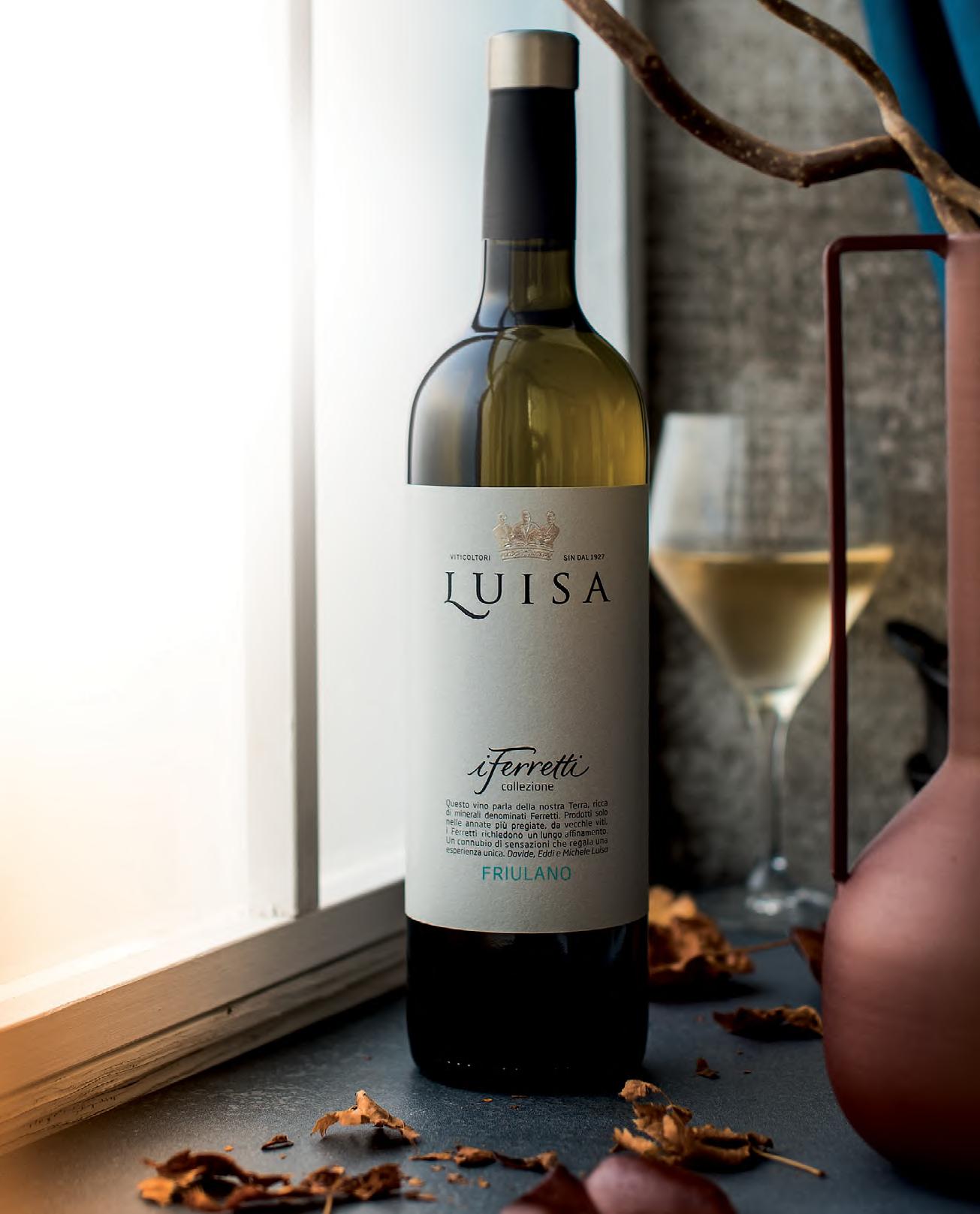
His restaurant, with the new building that houses it, has become a true monument to Made in Italy hospitality in the heart of Tuscany.
Gaetano Trovato is one of the big names on the international restaurant scene, a chef who has trained and continues to train dozens and dozens of new generations in the kitchen who breathe the positive and stimulating atmosphere that binds this experience, starting with the very name of the restaurant dedicated to the architect of the Florentine Cathedral, to the Italian Renaissance. As a Sicilian, he has perfected here in Tuscany the relationship with the land and with contemporary classicism.
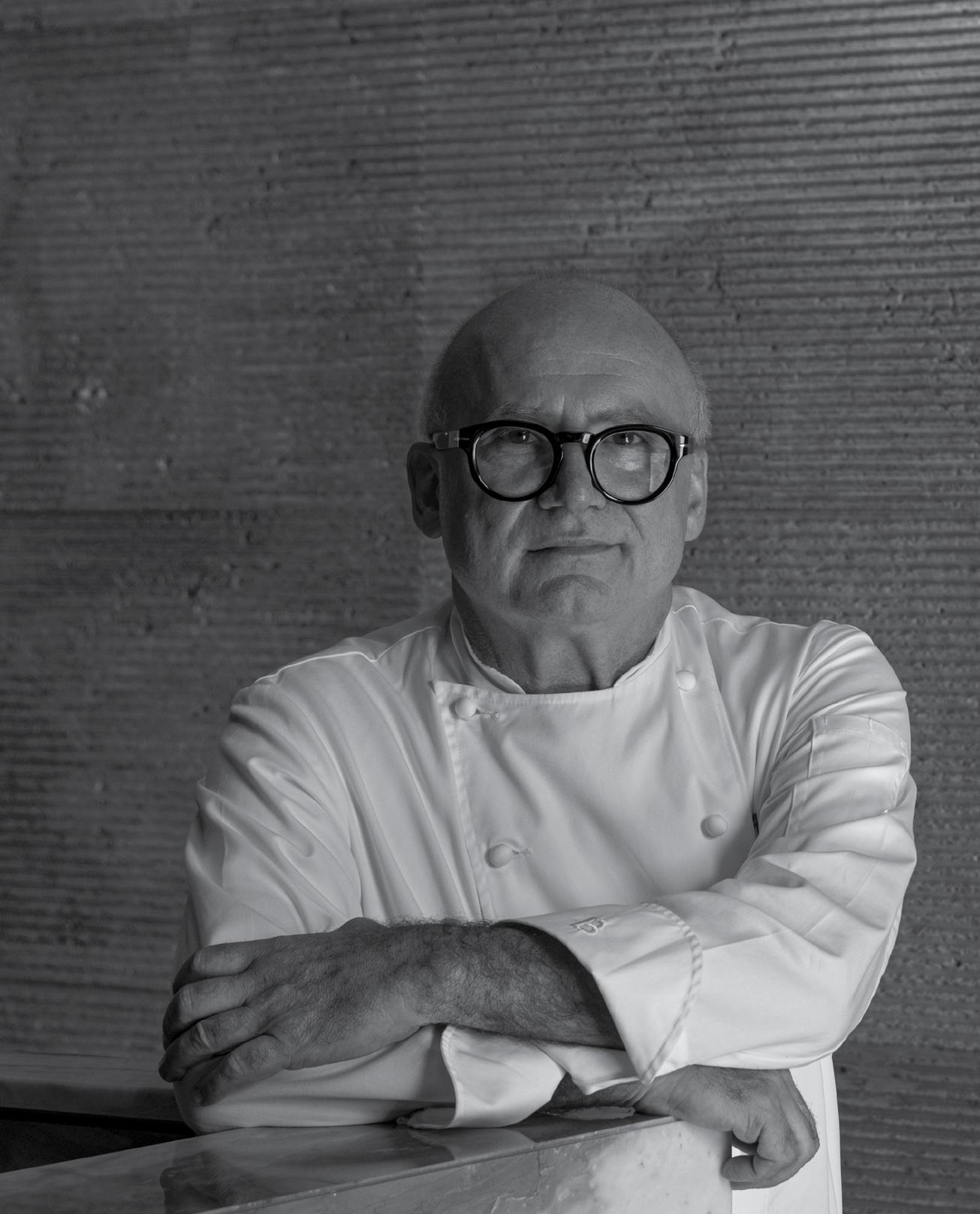
WHERE
ARNOLFO RISTORANTE
Colle di Val d’Elsa (SI) v.le della Rimembranza, 24 0577 920549 - arnolfo.com
SCORES IN THE GUIDE
Cuisine 45
Cellar 17
Service 27
Total 89
YEAR OF OPENING 1984
by Stefano Polacchi – photos by Stefano Scatà MAY-JUNE 2023 79 GAMBERO ROSSO PORTRAIT OF A CHEF IN THREE DISHES - GAETANO TROVATOIt is the first appetiser of the "Vegetable Impressionism" tasting menu, born during winter. It is the emblem of the concept of zero waste which underlies the creation of each Arnolfo menu. Every part of the ingredient is used: with pumpkin skins he makes a glaze that covers it, giving it its own taste. The homemade kefir lends acidity and from the IGP Piemonte hazelnuts comes a praline that gives crunchiness

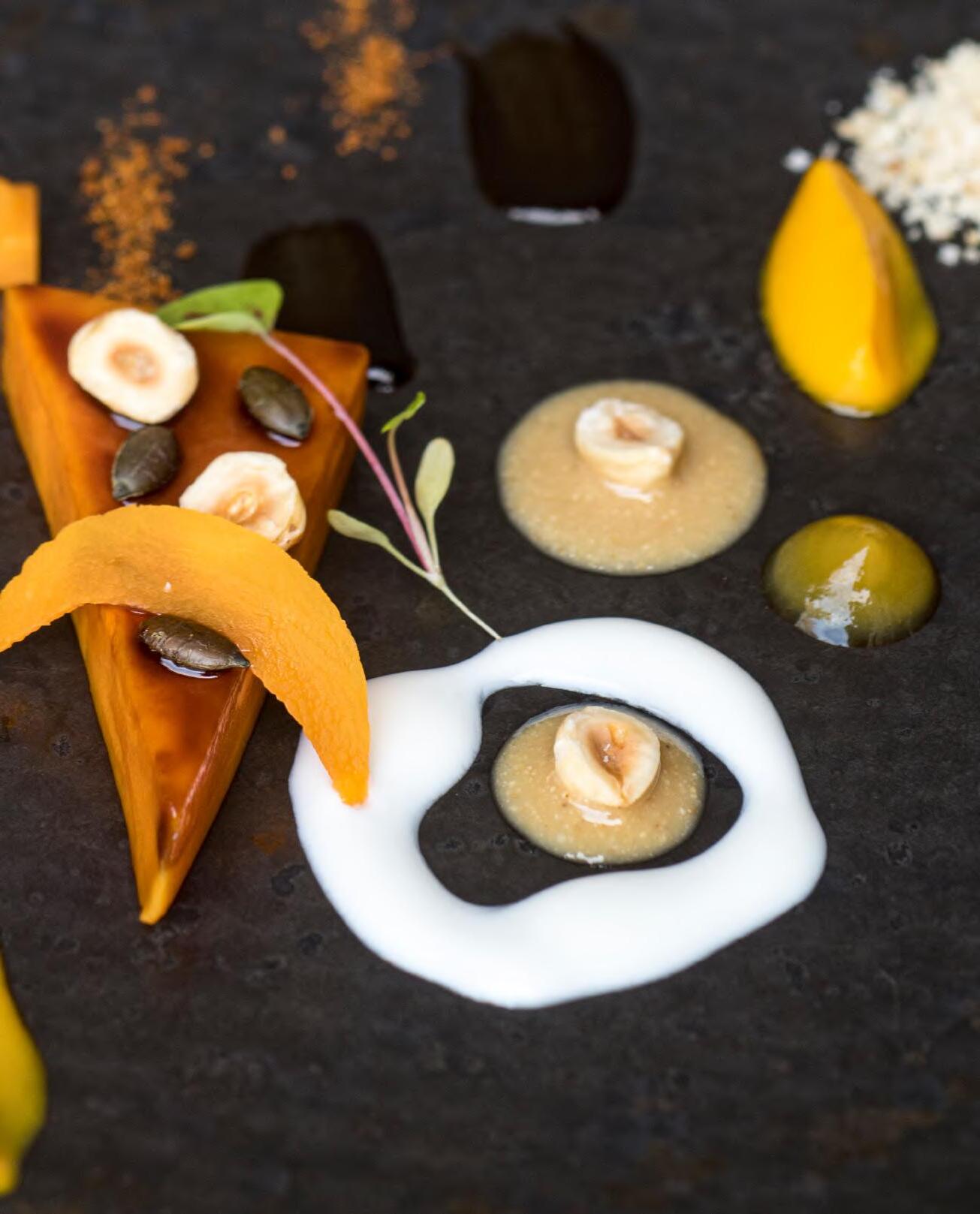

Squab meat cannot be missing in Arnolfo's house. The great research and collaboration with artisans of taste – specifically with Laura Peri, farmer raising animals in the Valdarno – have created a high quality supply chain. Here too the protagonists are seasonal products and pigeon is used in all its parts: breast, with pomegranate and beetroot, the thighs used for the filling of the cappelletti cooked in squab broth and stock to complete the taste of the dish

This historic dish by Gaetano Trovato revisited in the "evolution of the Territory" menu is dedicated to Arnolfo's 40th anniversary. It has always been inspired by the flavours and colours of Sicily, the birthplace of the Trovato family. The almonds rebuild the turbot's skin, further flavoured with aromatic herbs




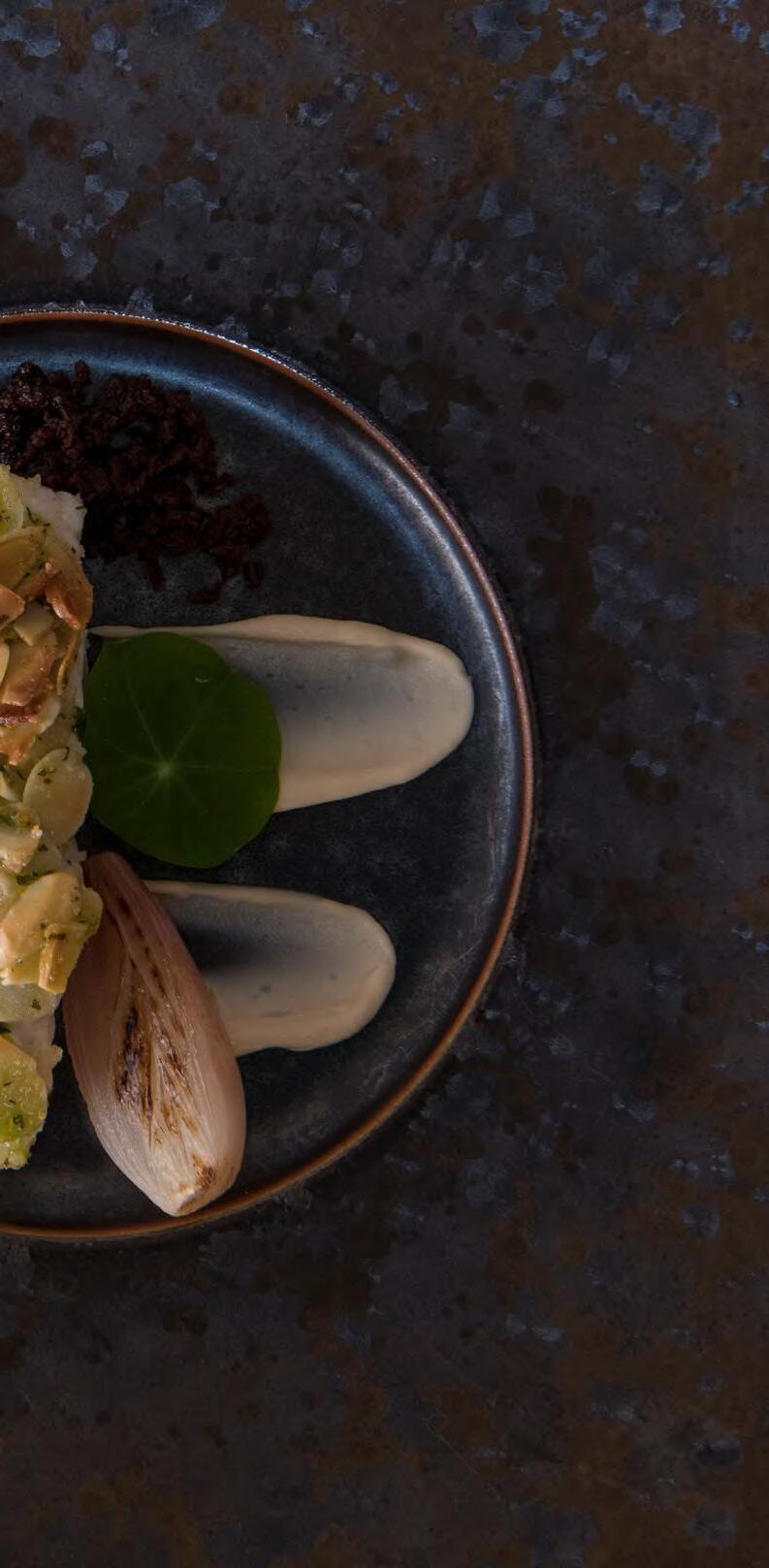


GAMBERO ROSSO
www.gamberorosso.it
DIRECTOR
Marco Mensurati
SENIOR EDITOR
Lorenzo Ruggeri
PHOTO EDITOR
Rossella Fantina
LAYOUT

Chiara Buosi, Maria Victoria Santiago
TRANSLATION
Eleonora Baldwin
CONTRIBUTORS
Antonella De Santis, Gianni Fabrizio, Paola Mencarelli, Stefano Polacchi
PHOTOGRAPHS AND DRAWINGS
Simone Cecchetti (cover), Glauco Canalis per Agricola Foradori, @lateef.photography, Alessandro Naldi, Stefano Scatà, Francesco Vignali
Advertising
Class Pubblicità SpA
Milano, Via Marco Burigozzo, 5 - tel. 02 58219522 For commercial enquiries: kanchieri@class.it
Gambero Rosso and
are registered trademarks belonging to Gambero Rosso S.p.A.
GAMBERO ROSSO is a Registered Trademark used under license by GR USA CORP
Copyright by GAMBERO ROSSO S.P.A. 2023. All rights reserved. Nothing may be reprinted in whole or in part without written permission from the publisher. GR USA CORP is not responsible for loss, damage, or any other injury as to unsolicited manuscripts, unsolicited artwork or any other unsolicited materials. may-june 2023
a www.gamberorossointernational.com ✉ international@gamberorosso.it f GamberoRossoInternational